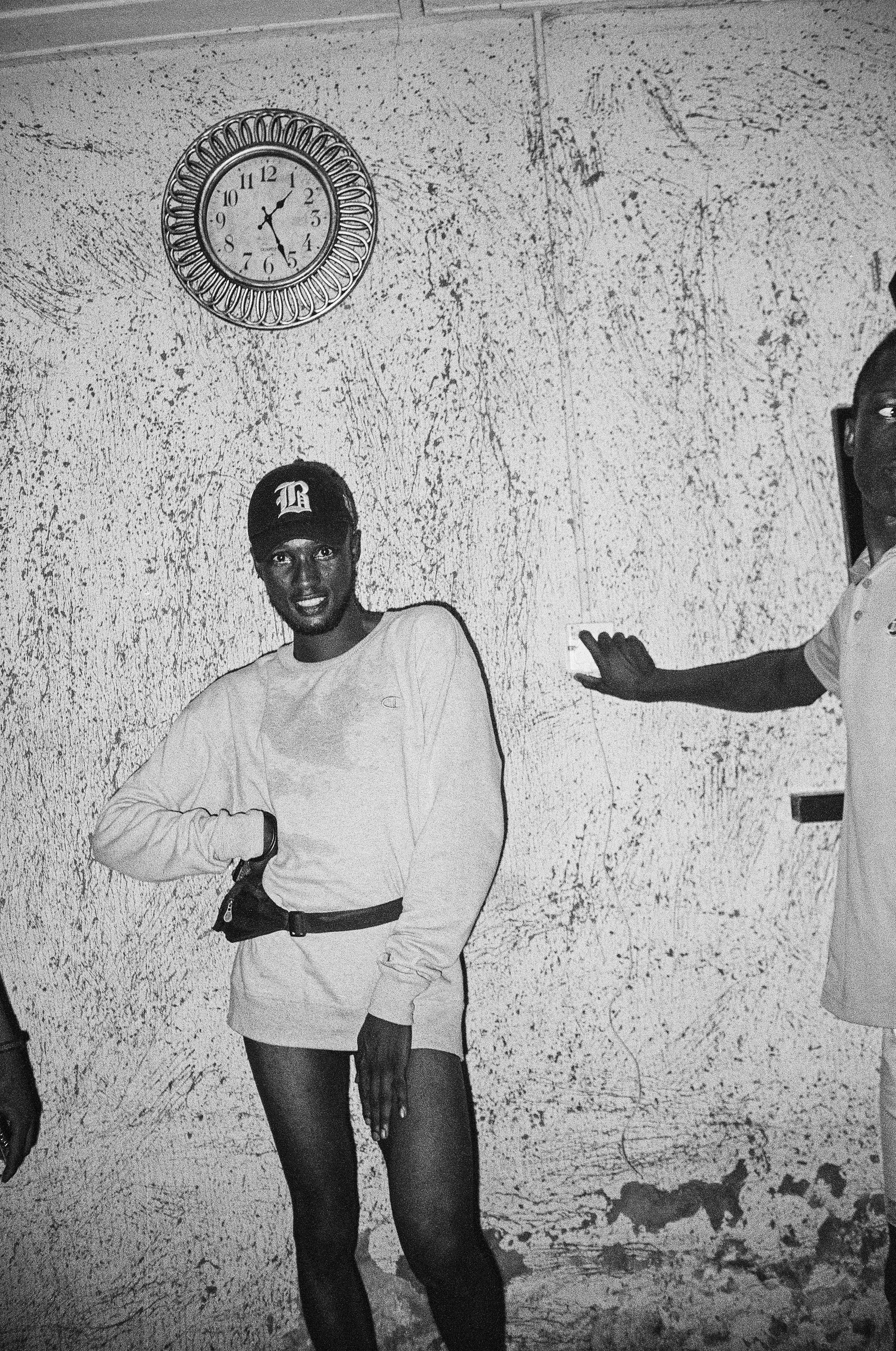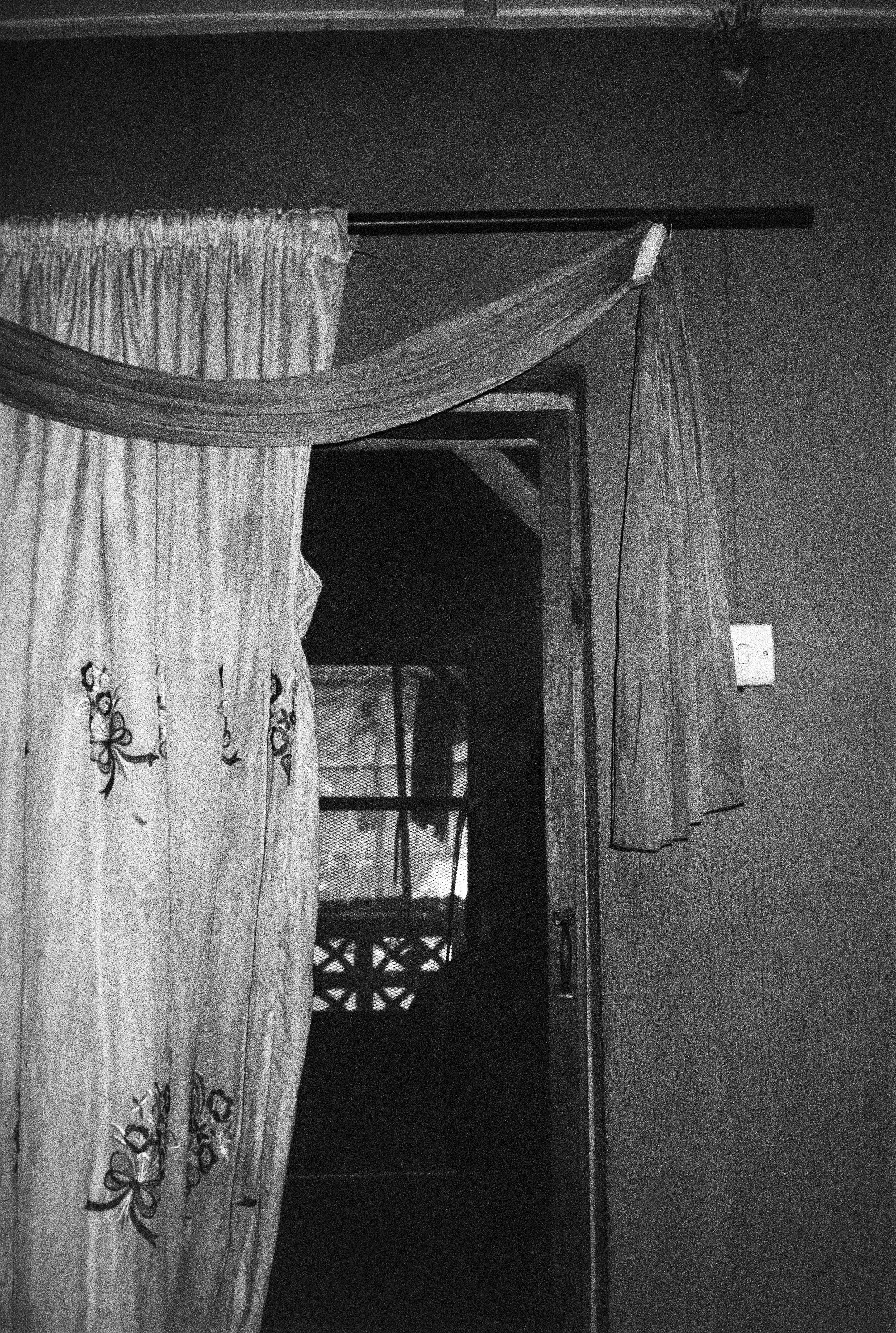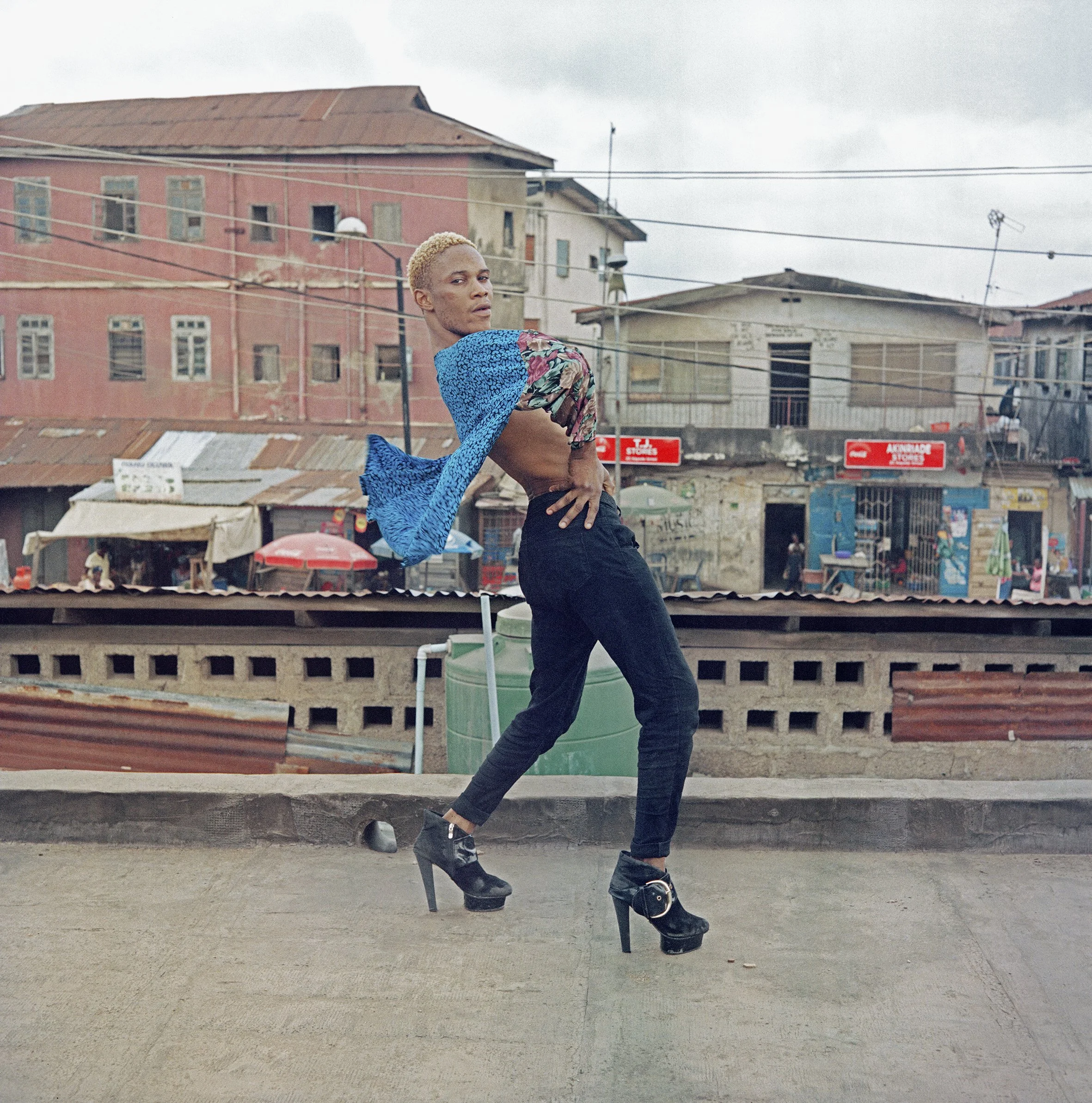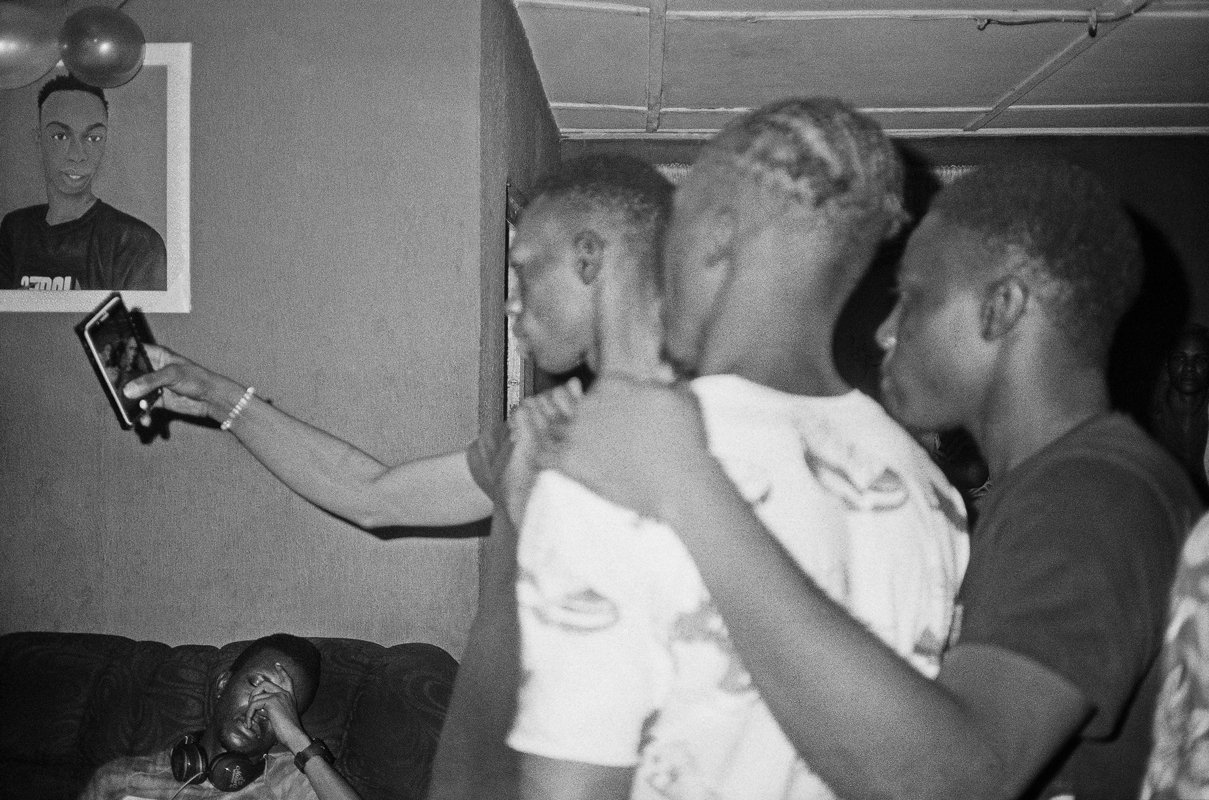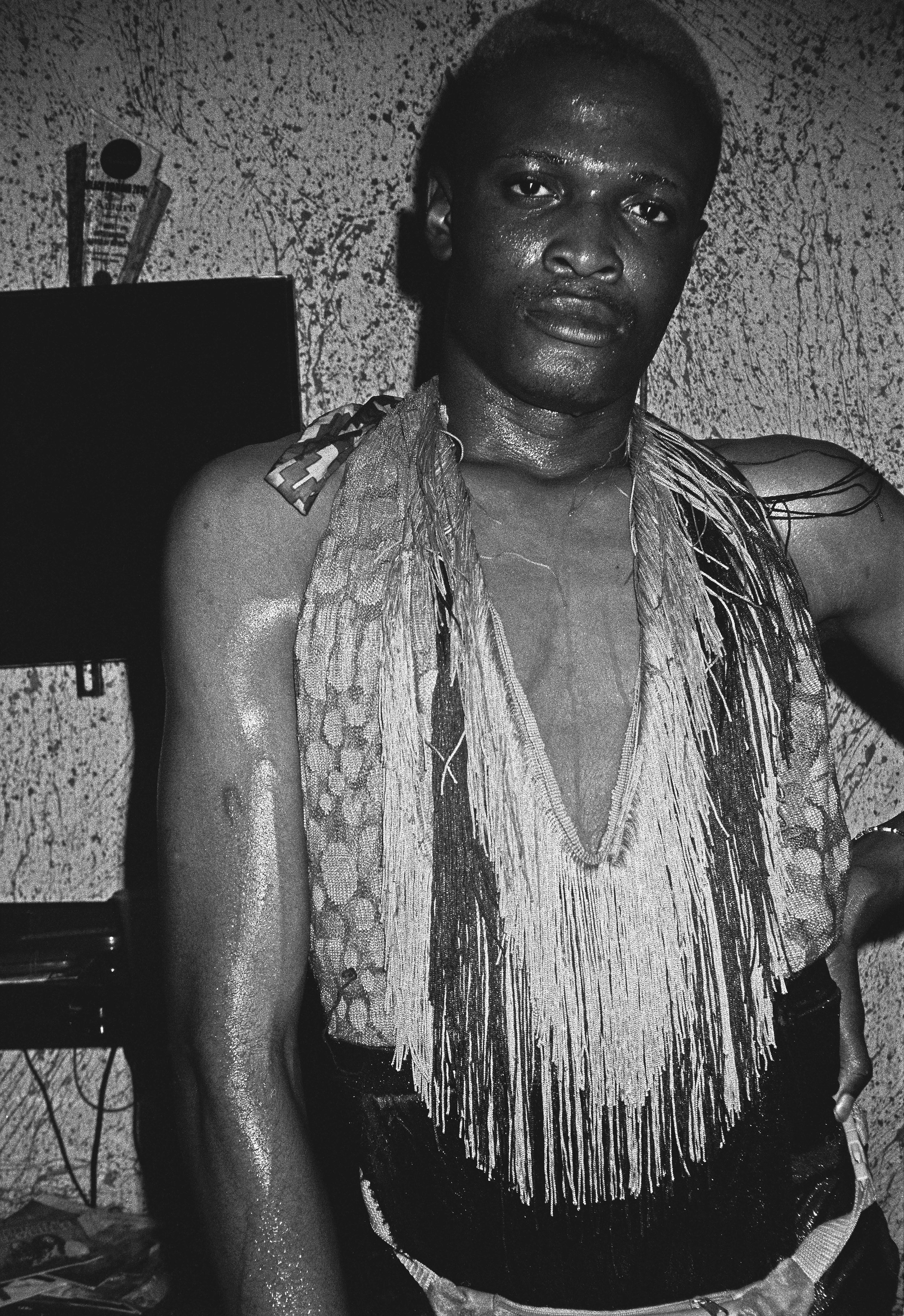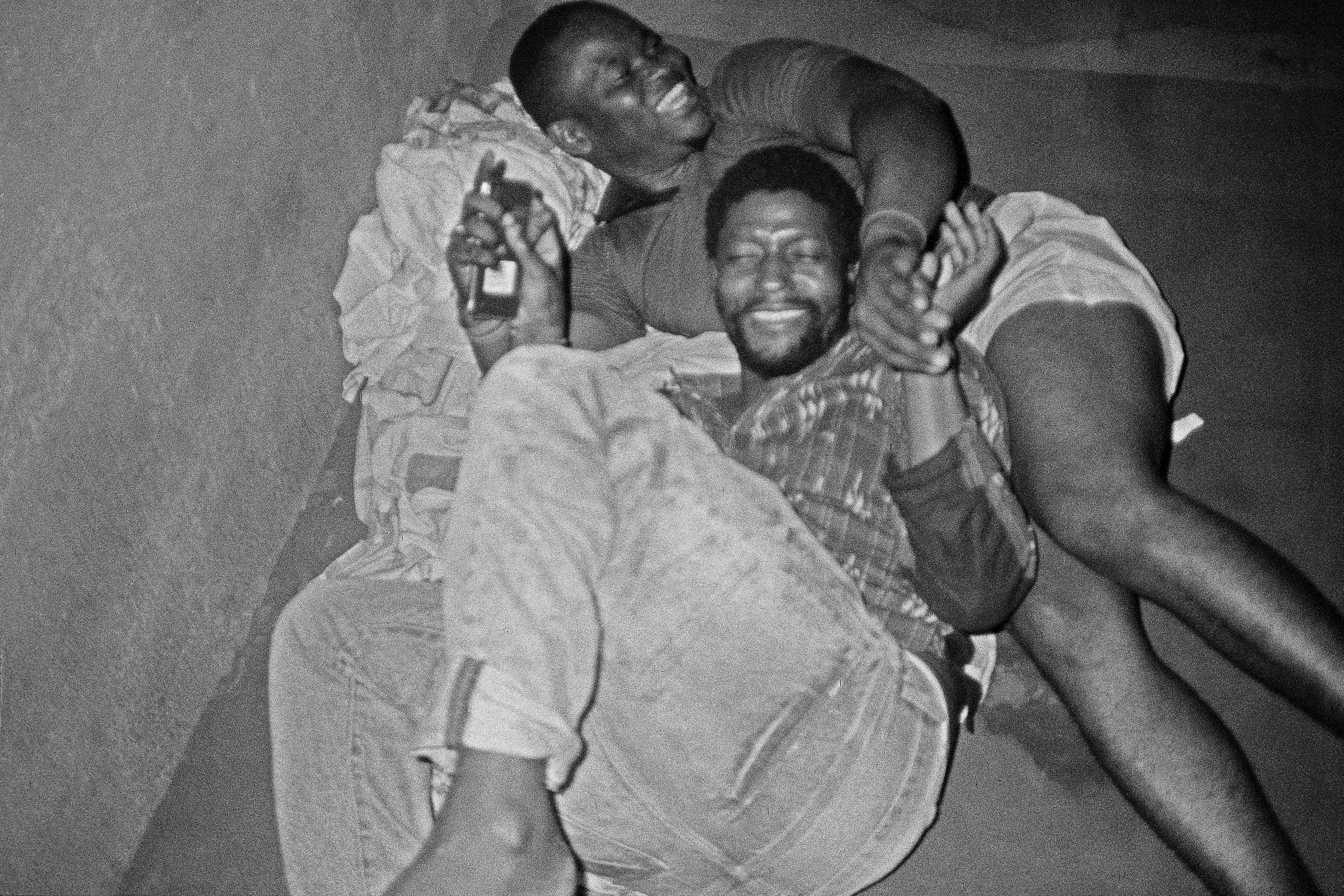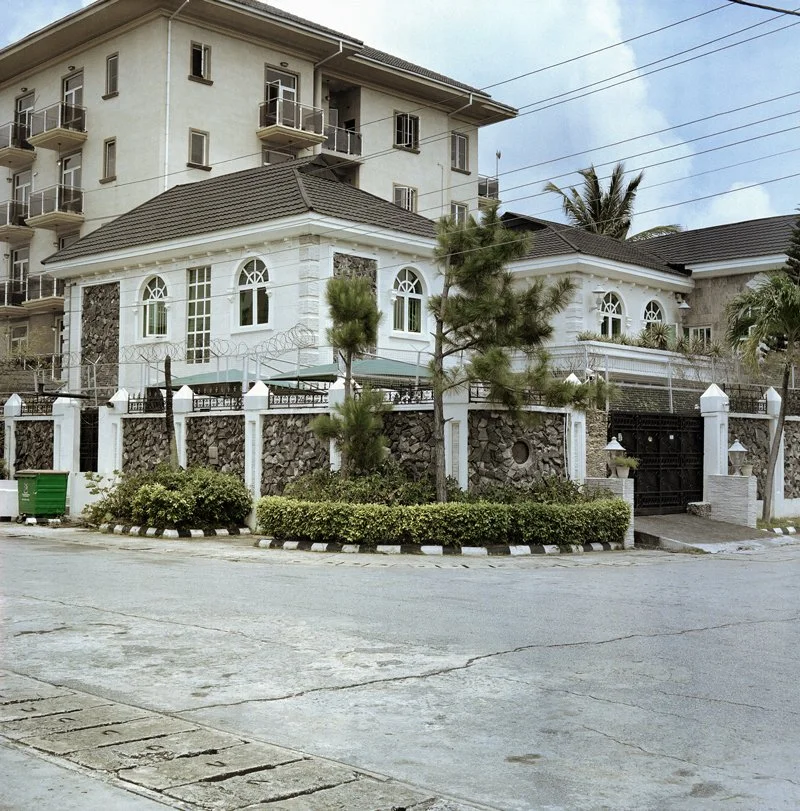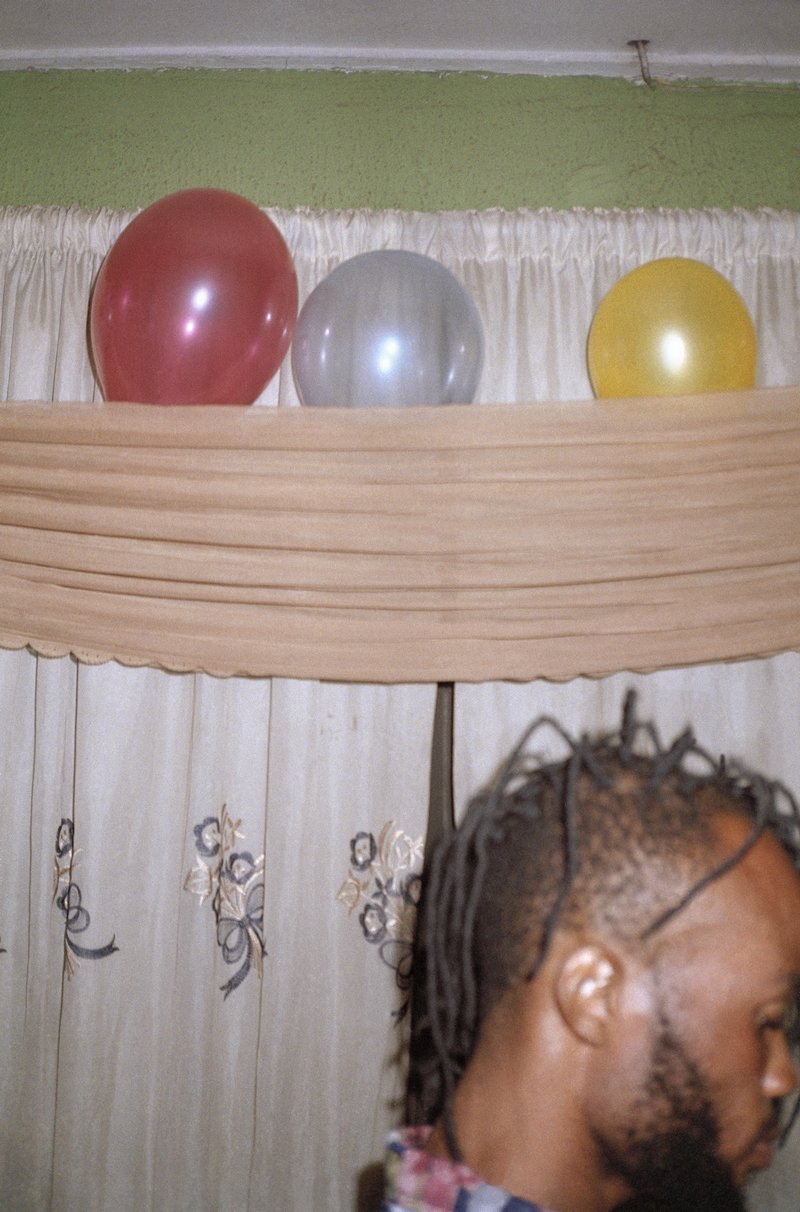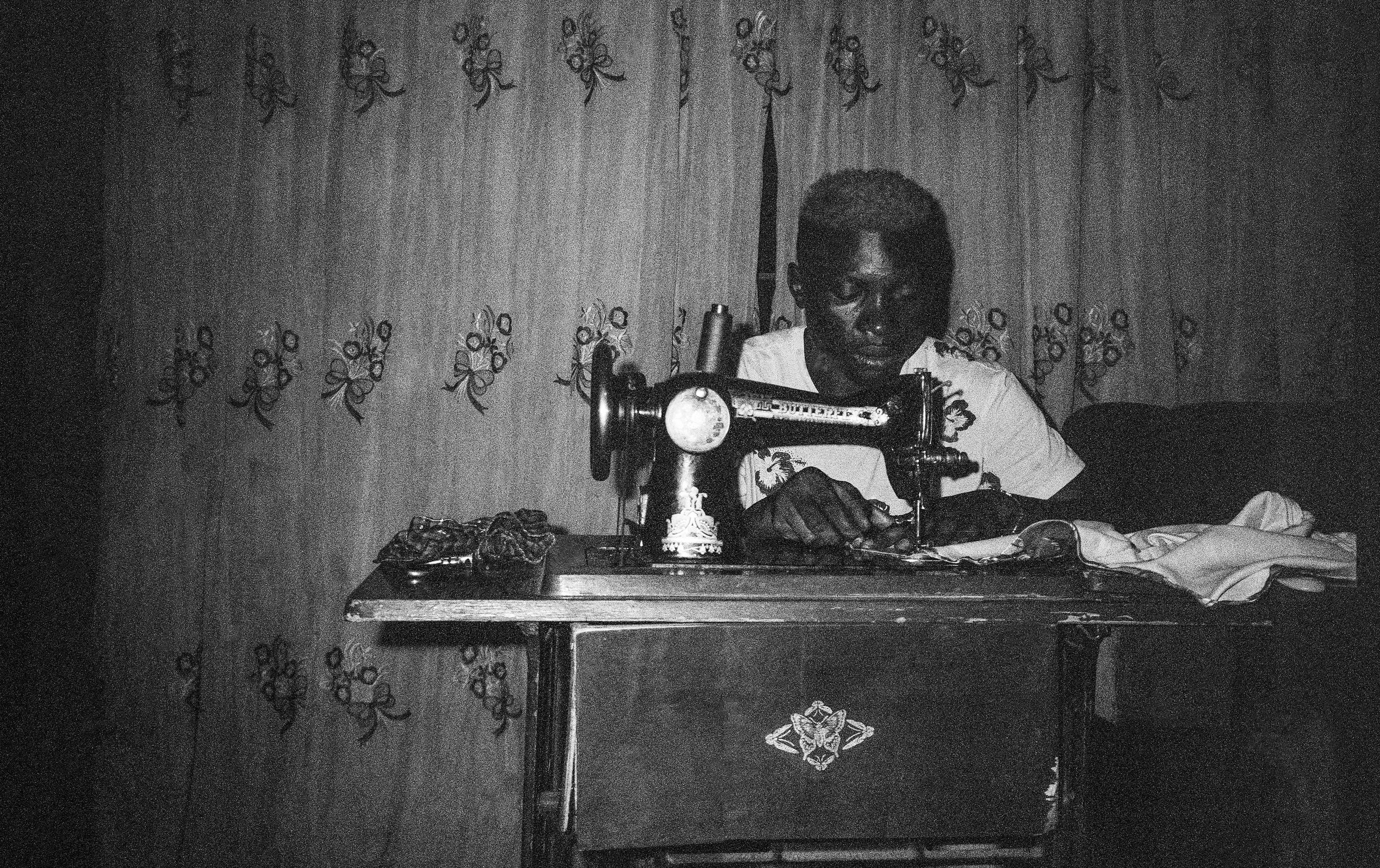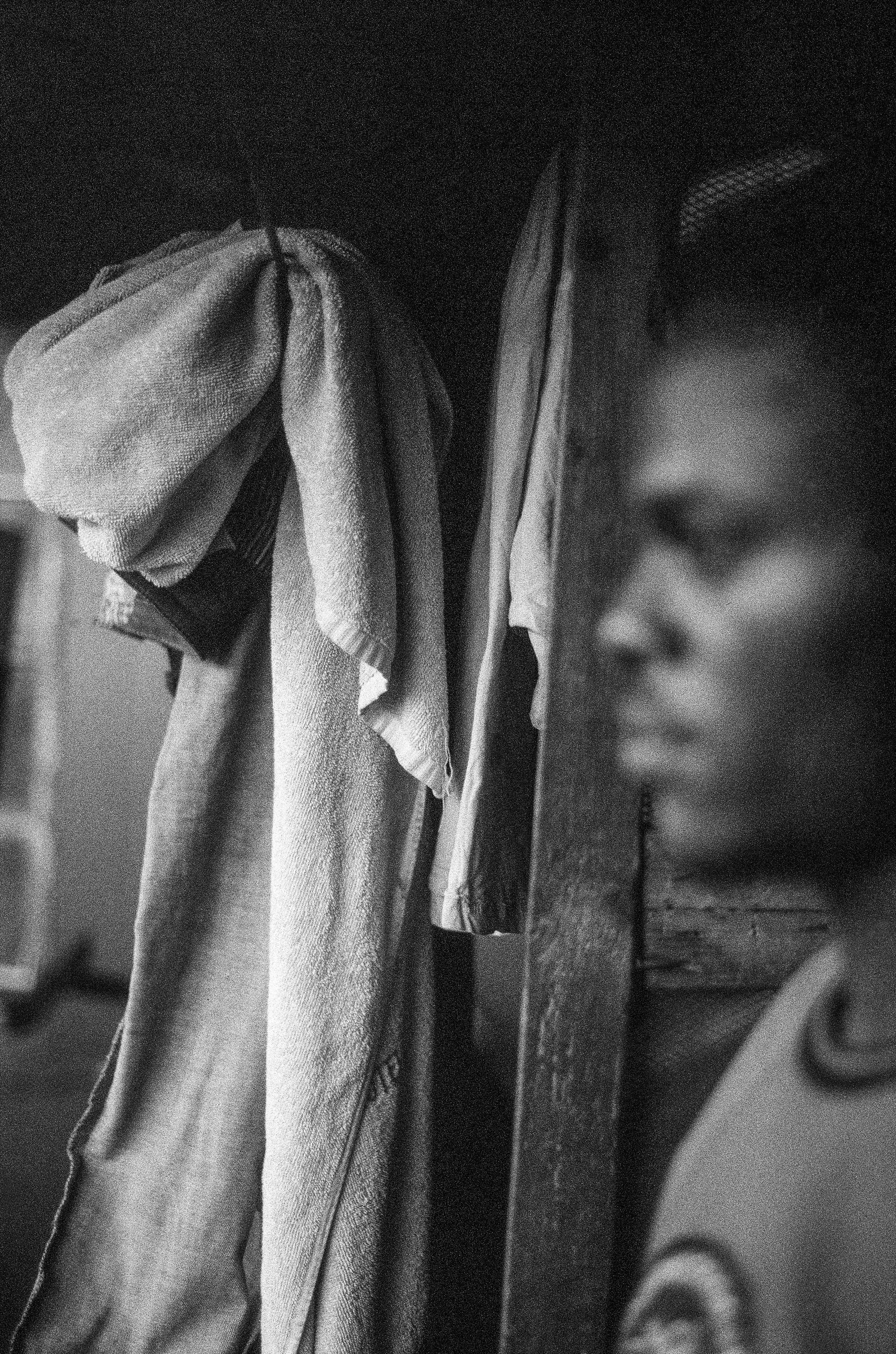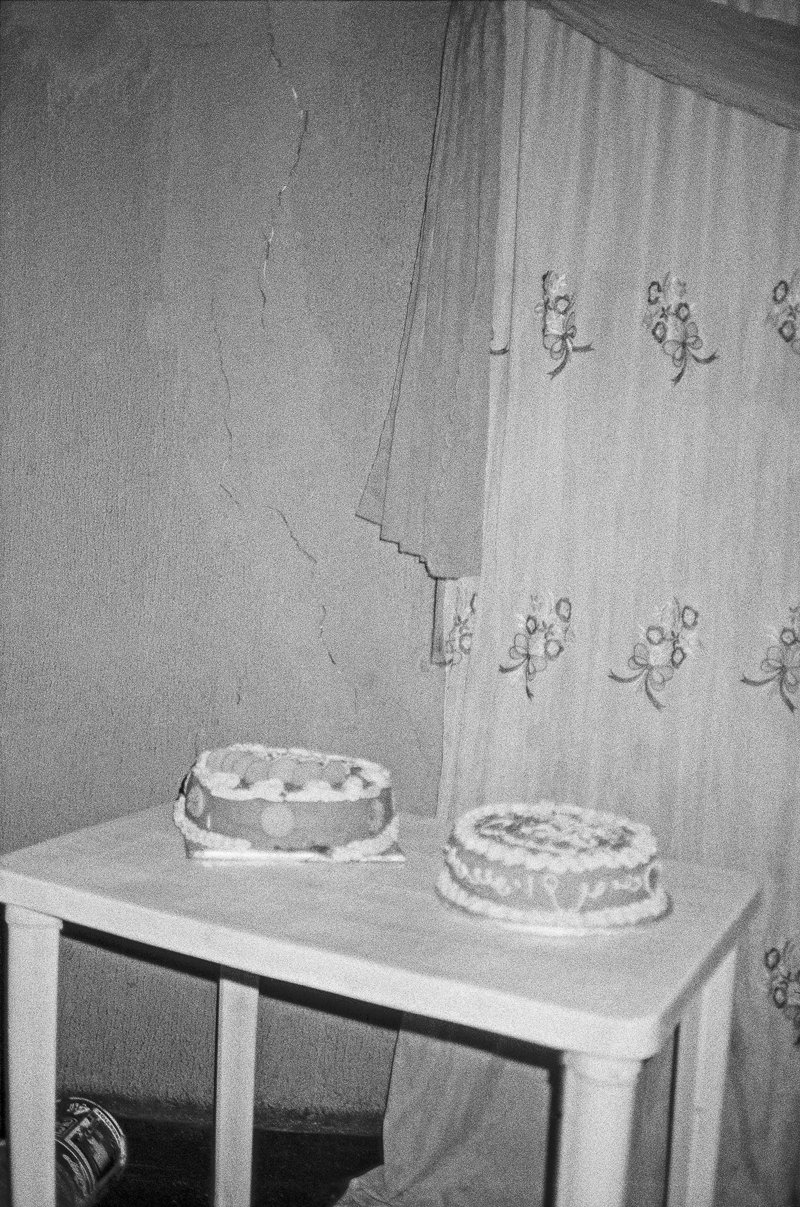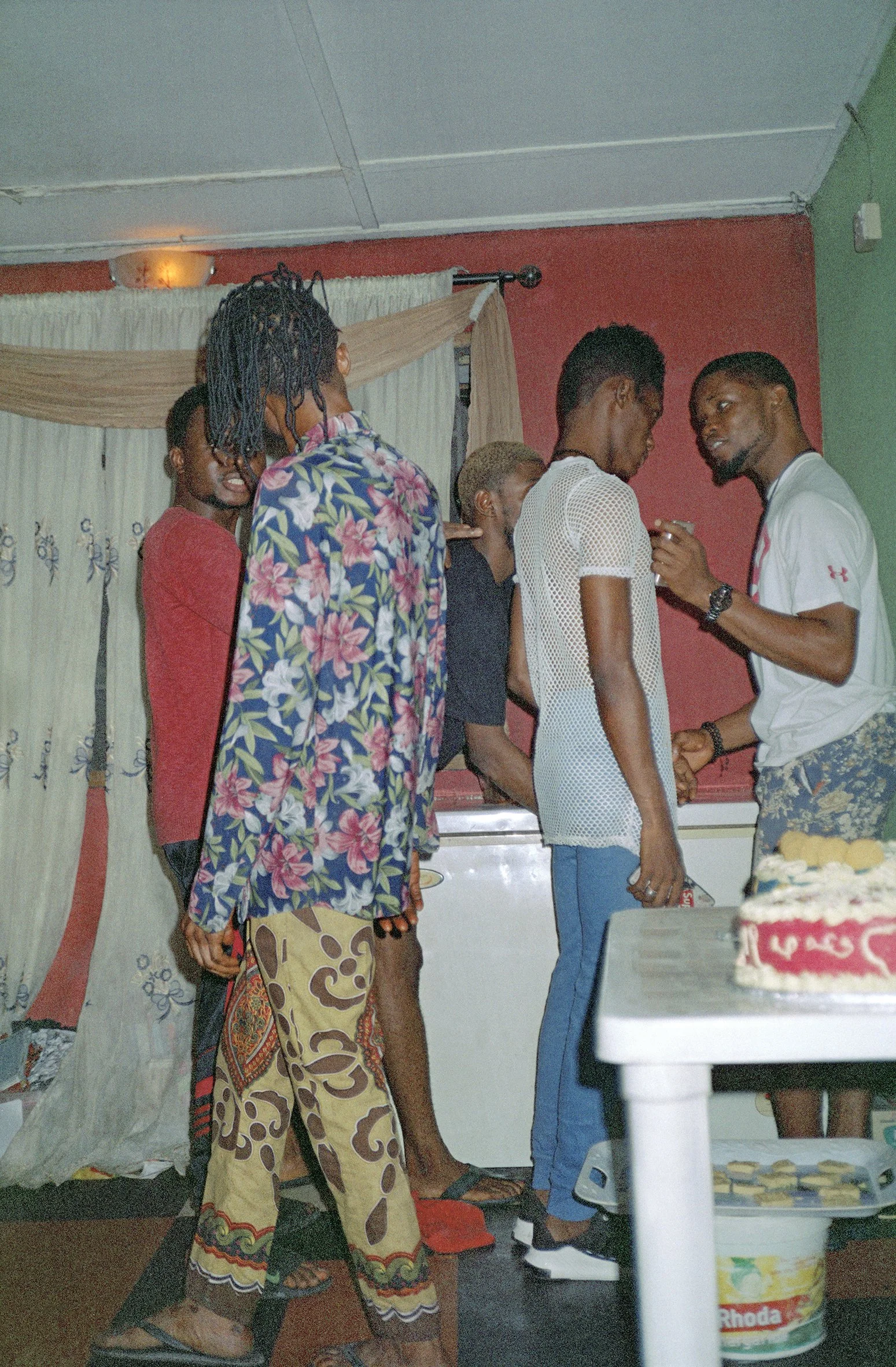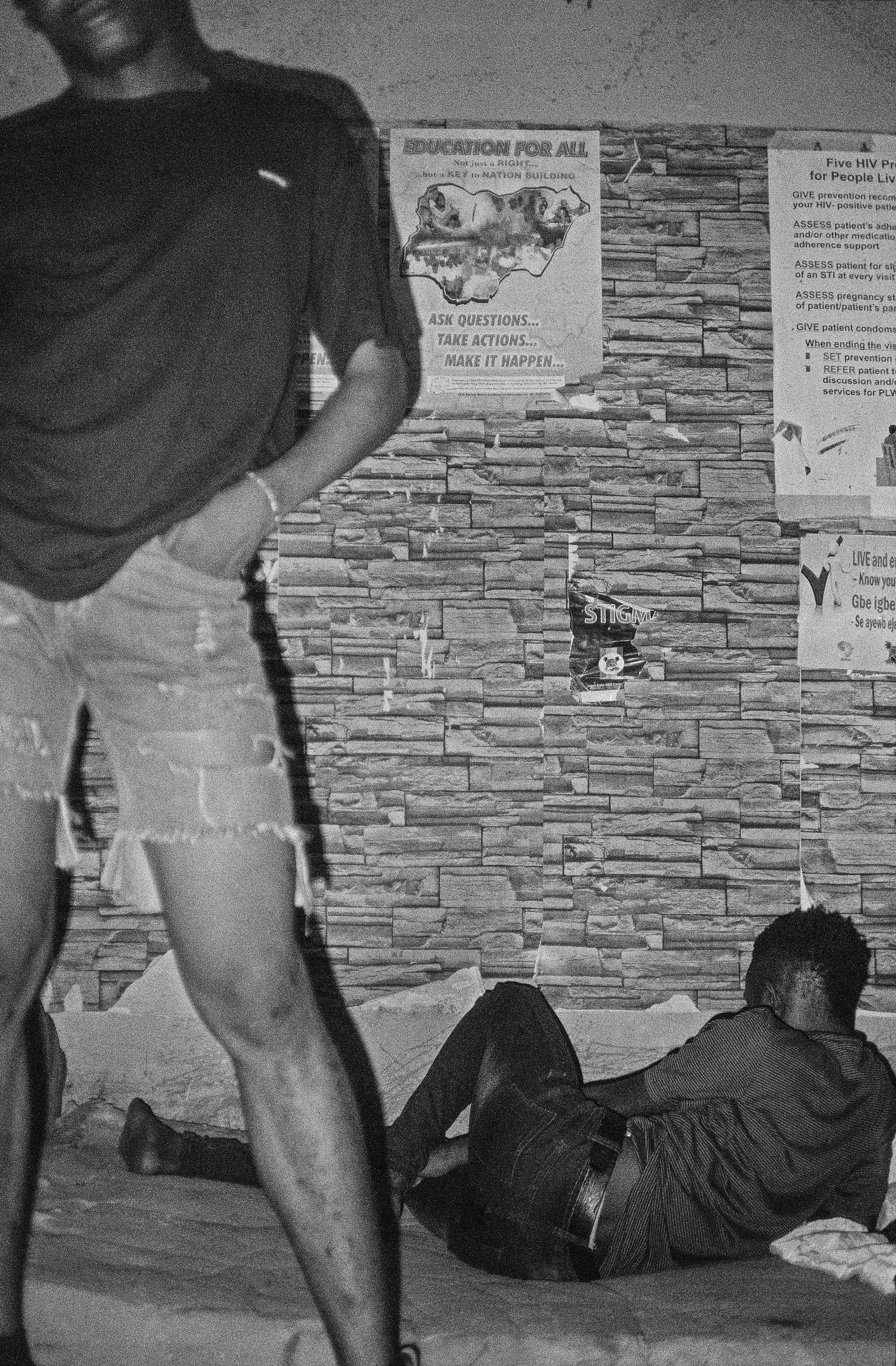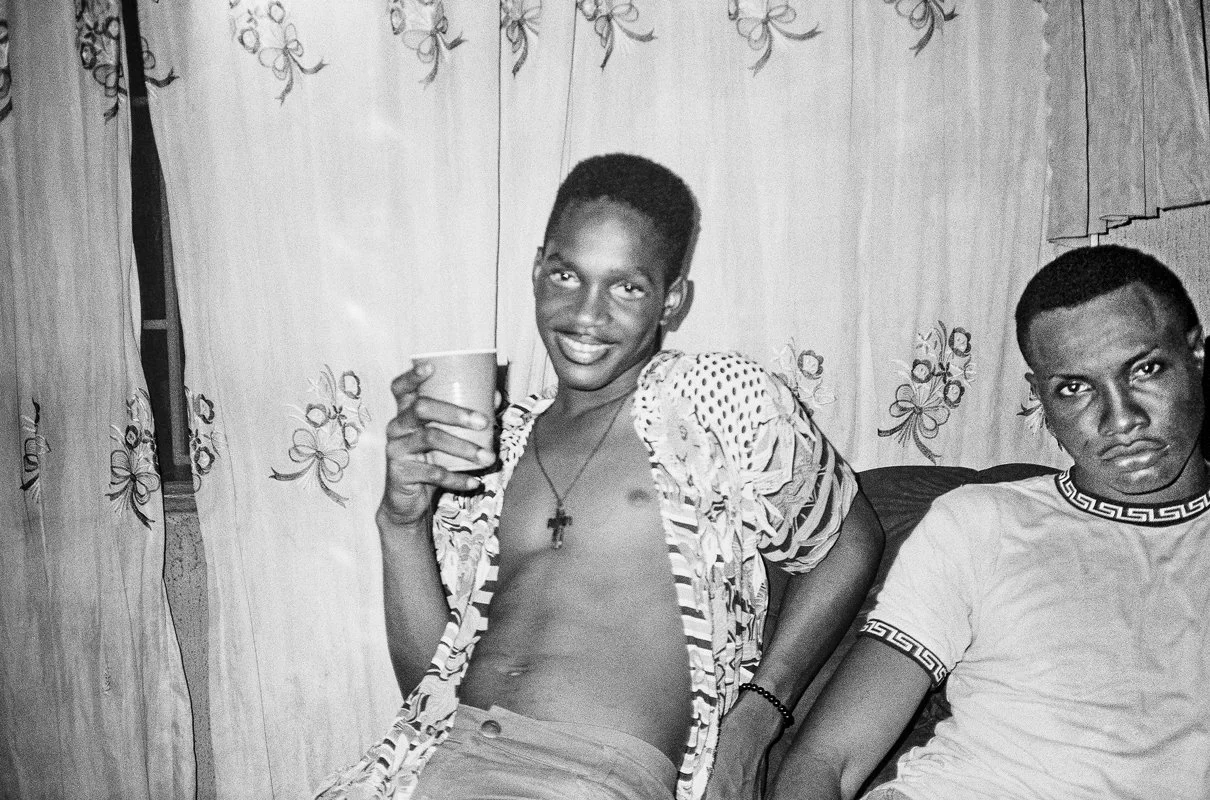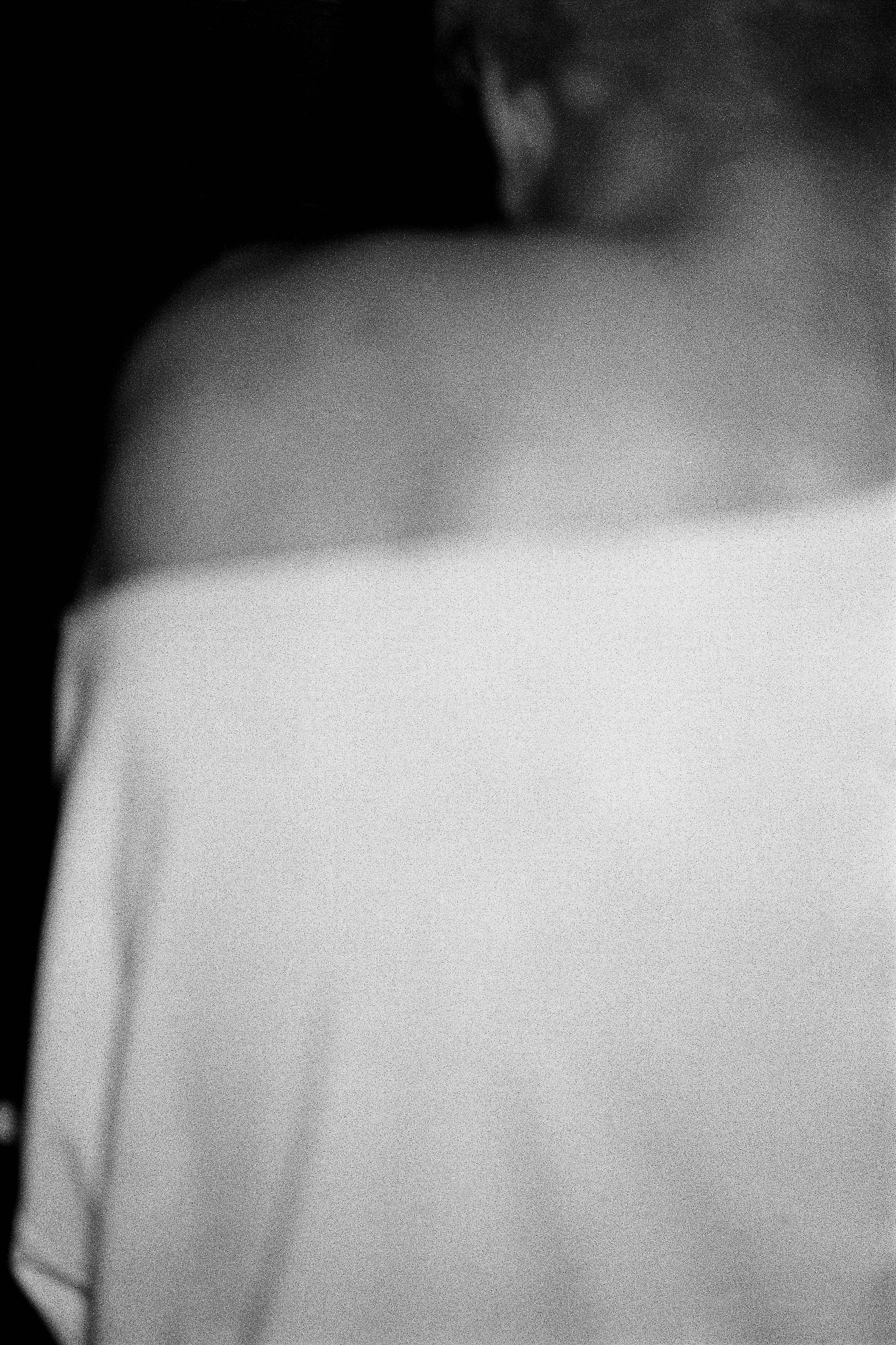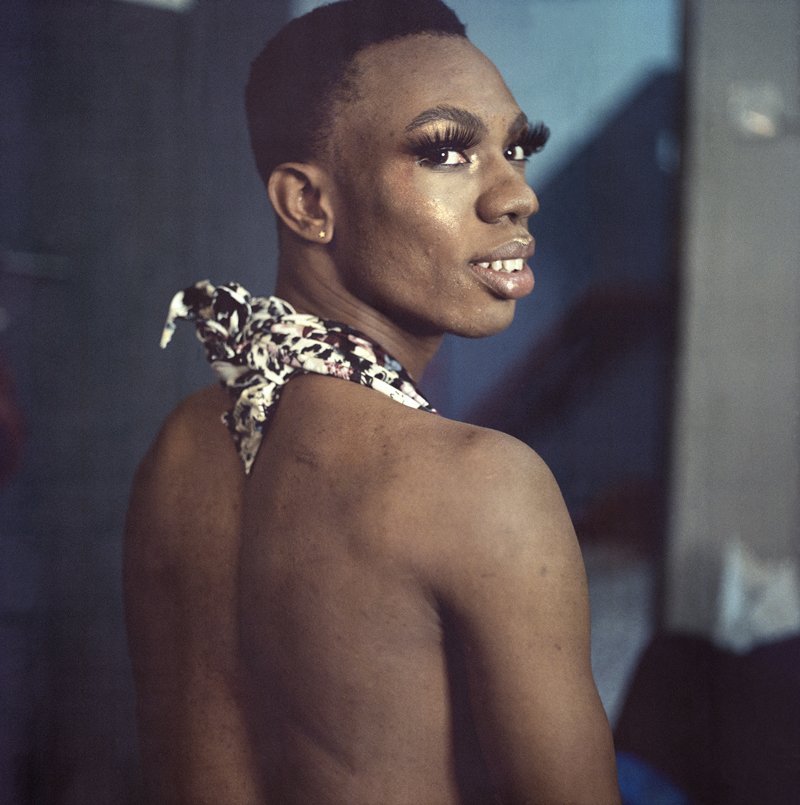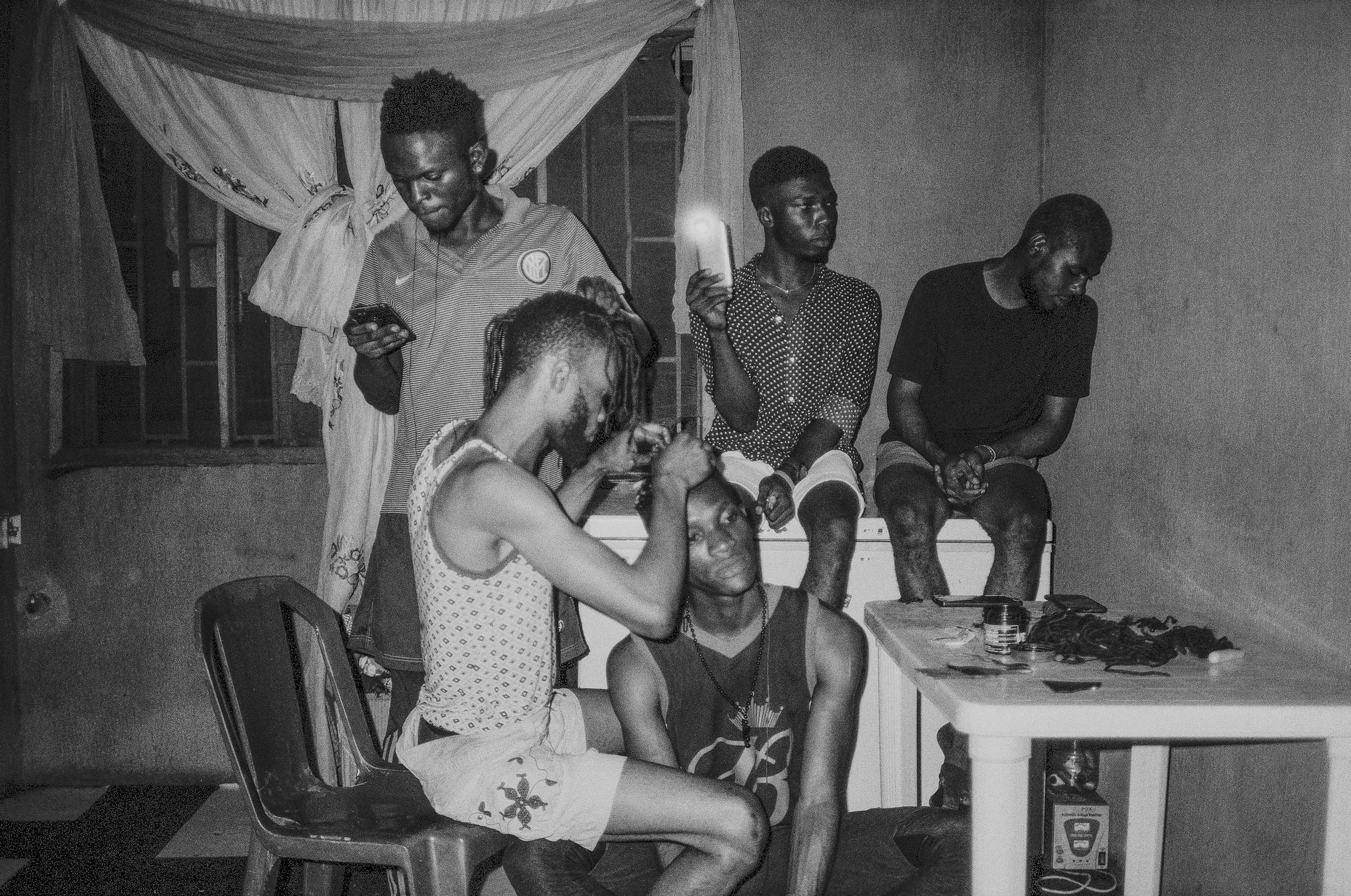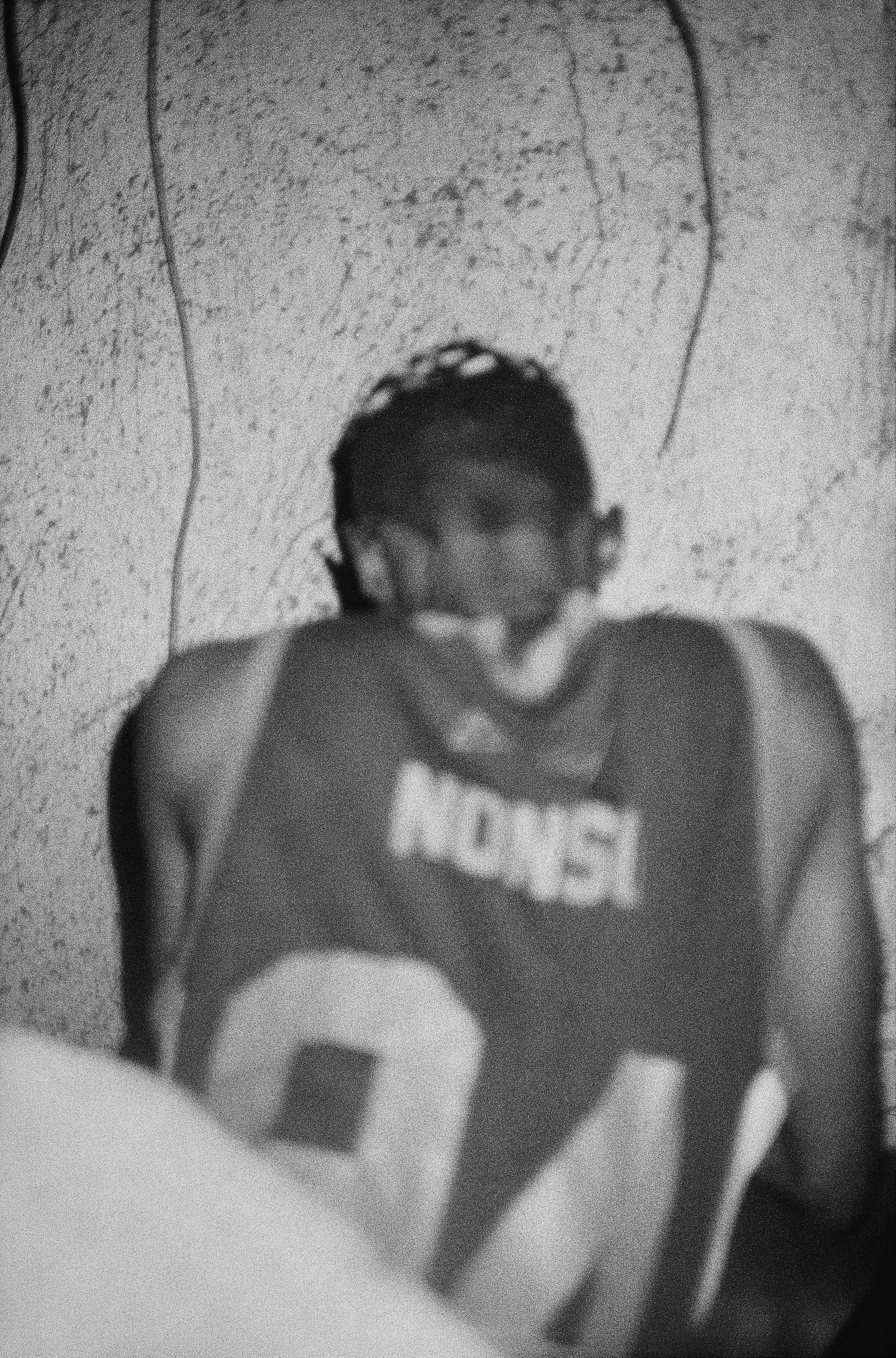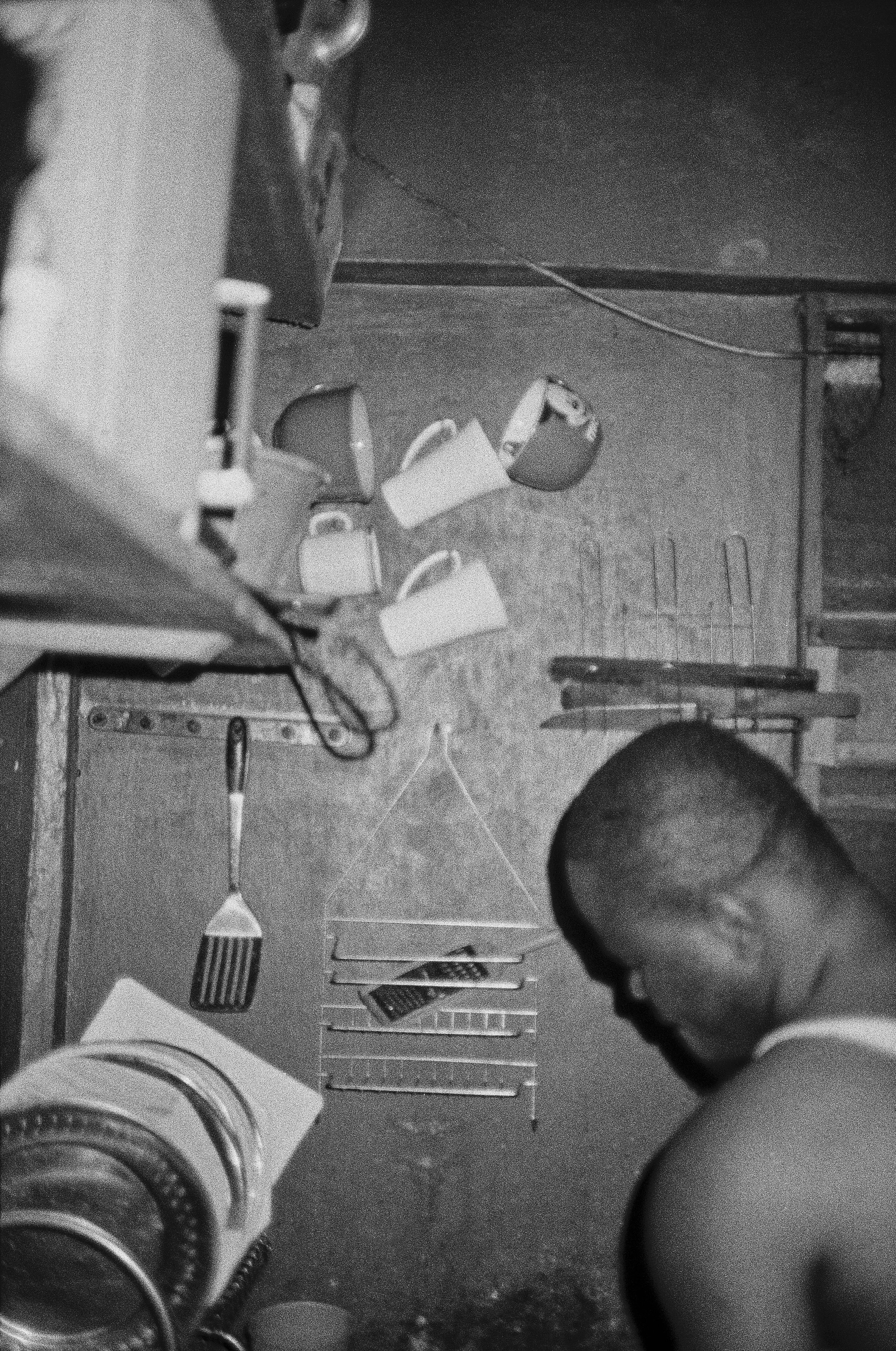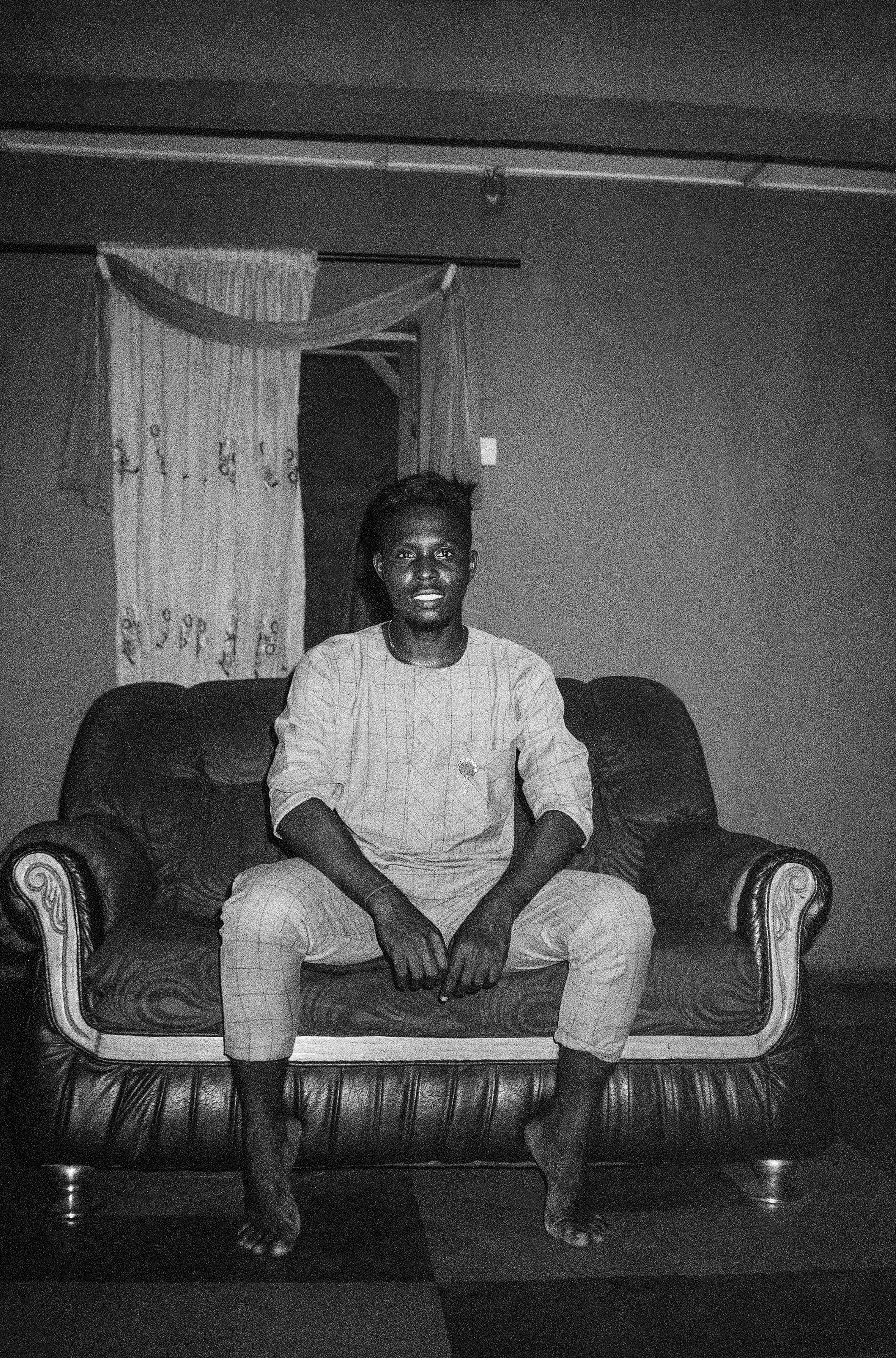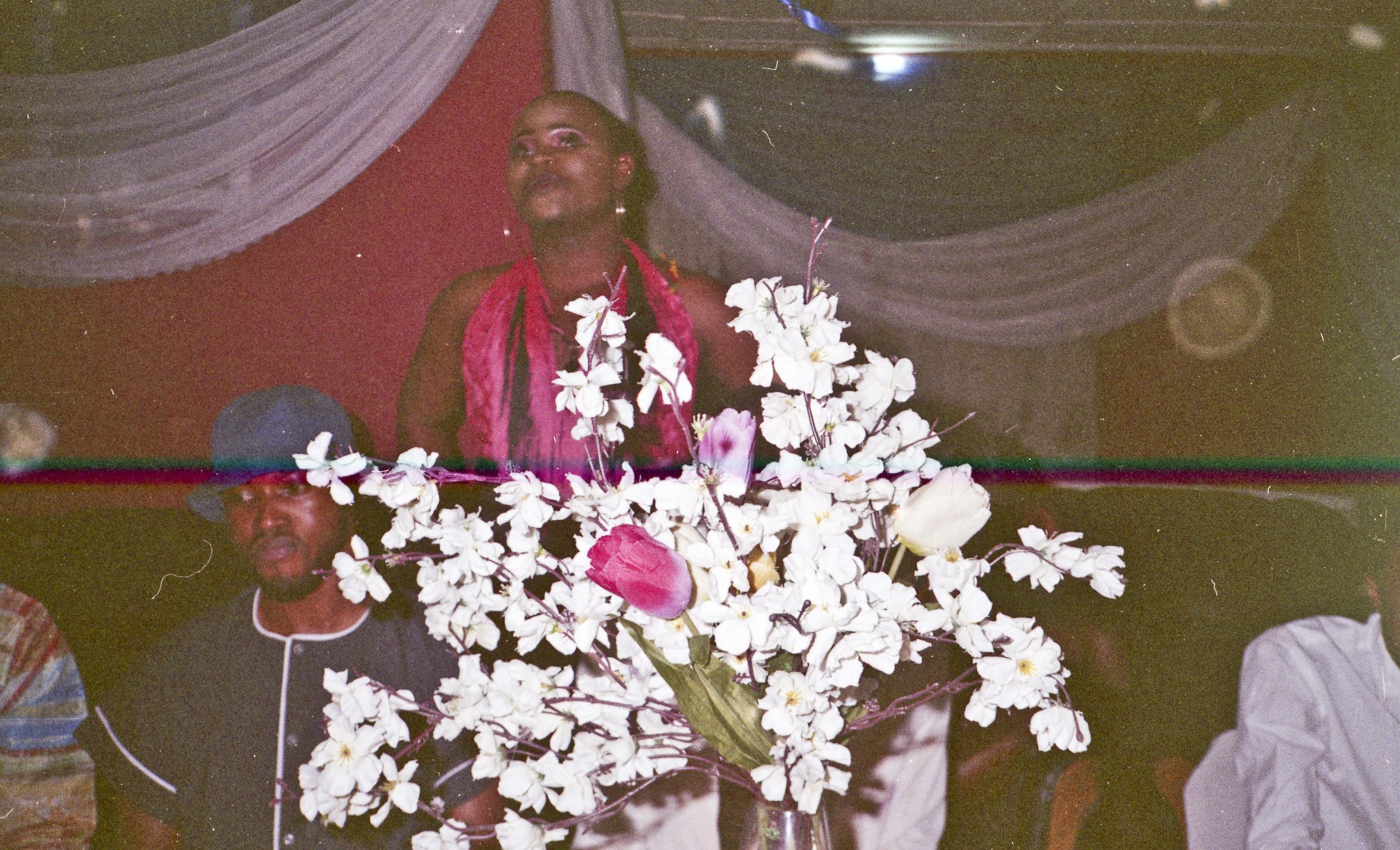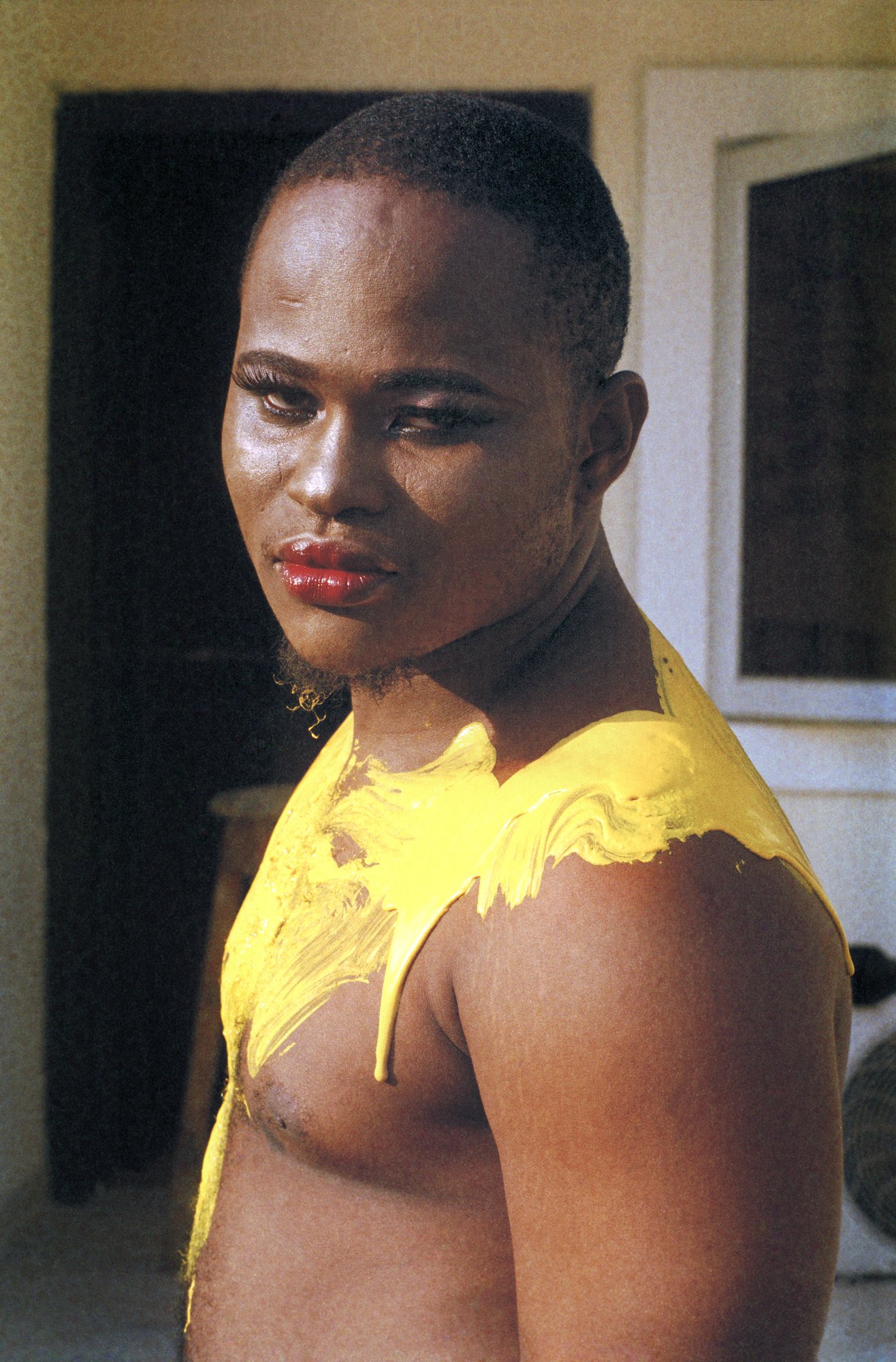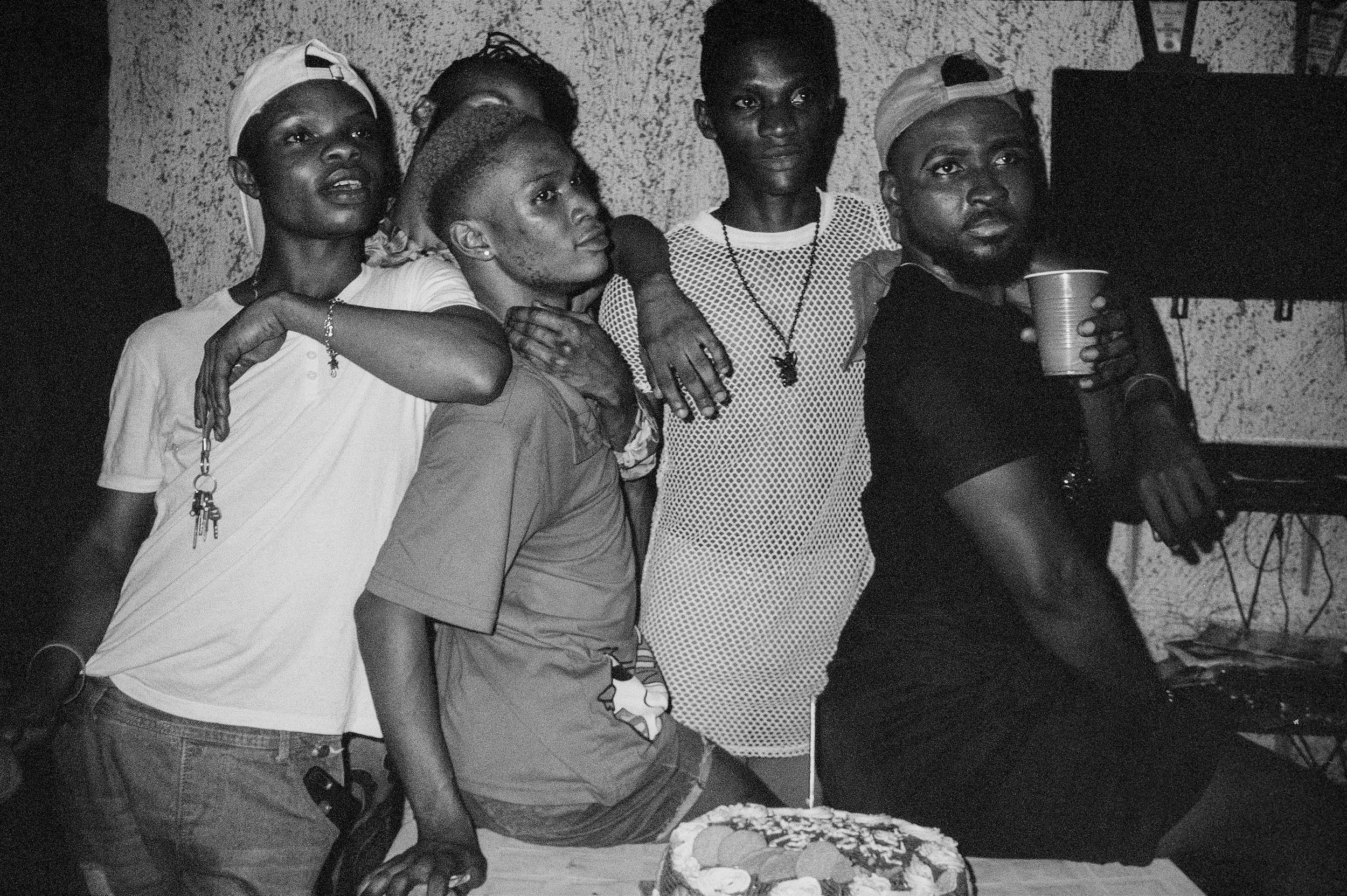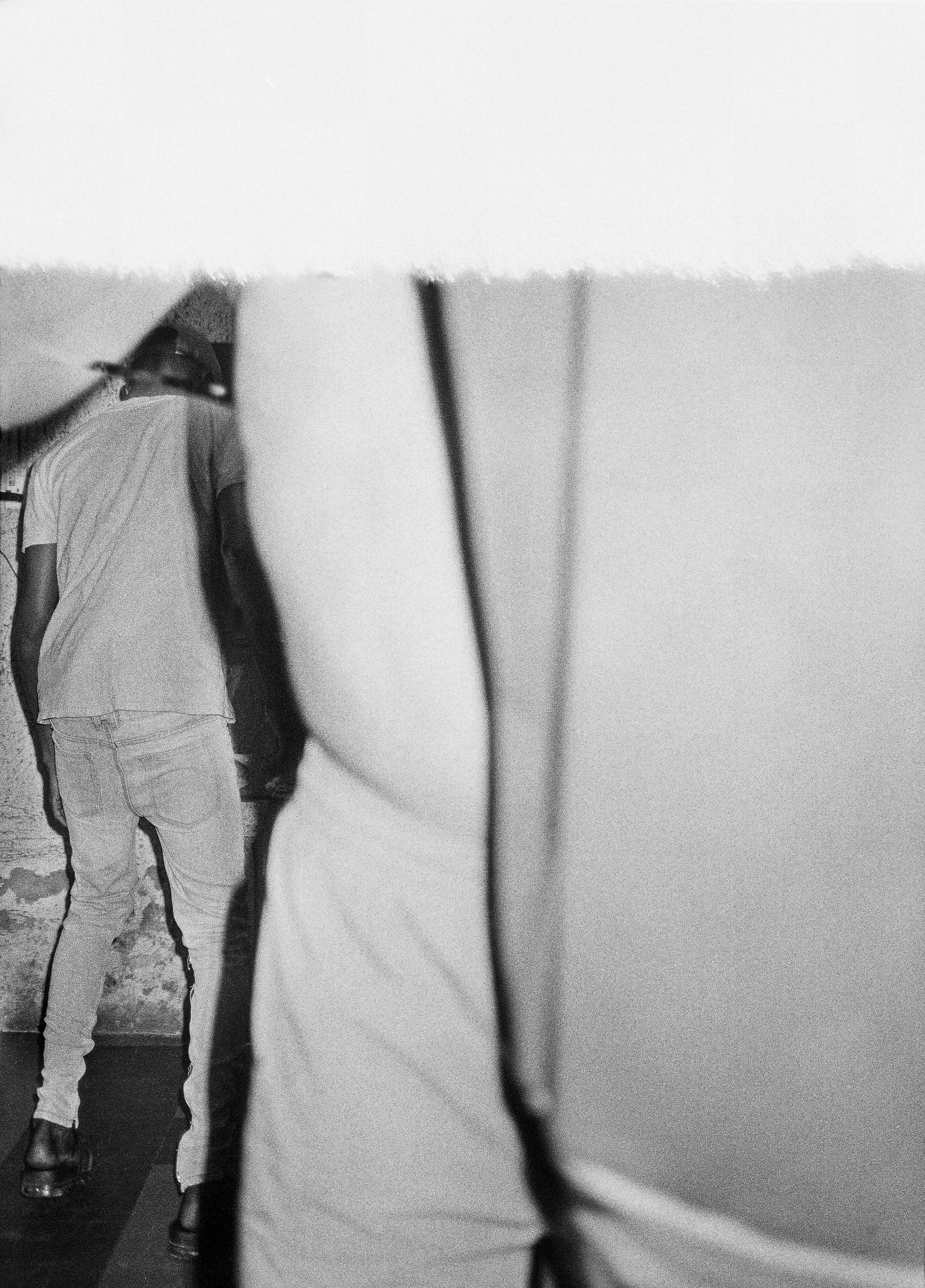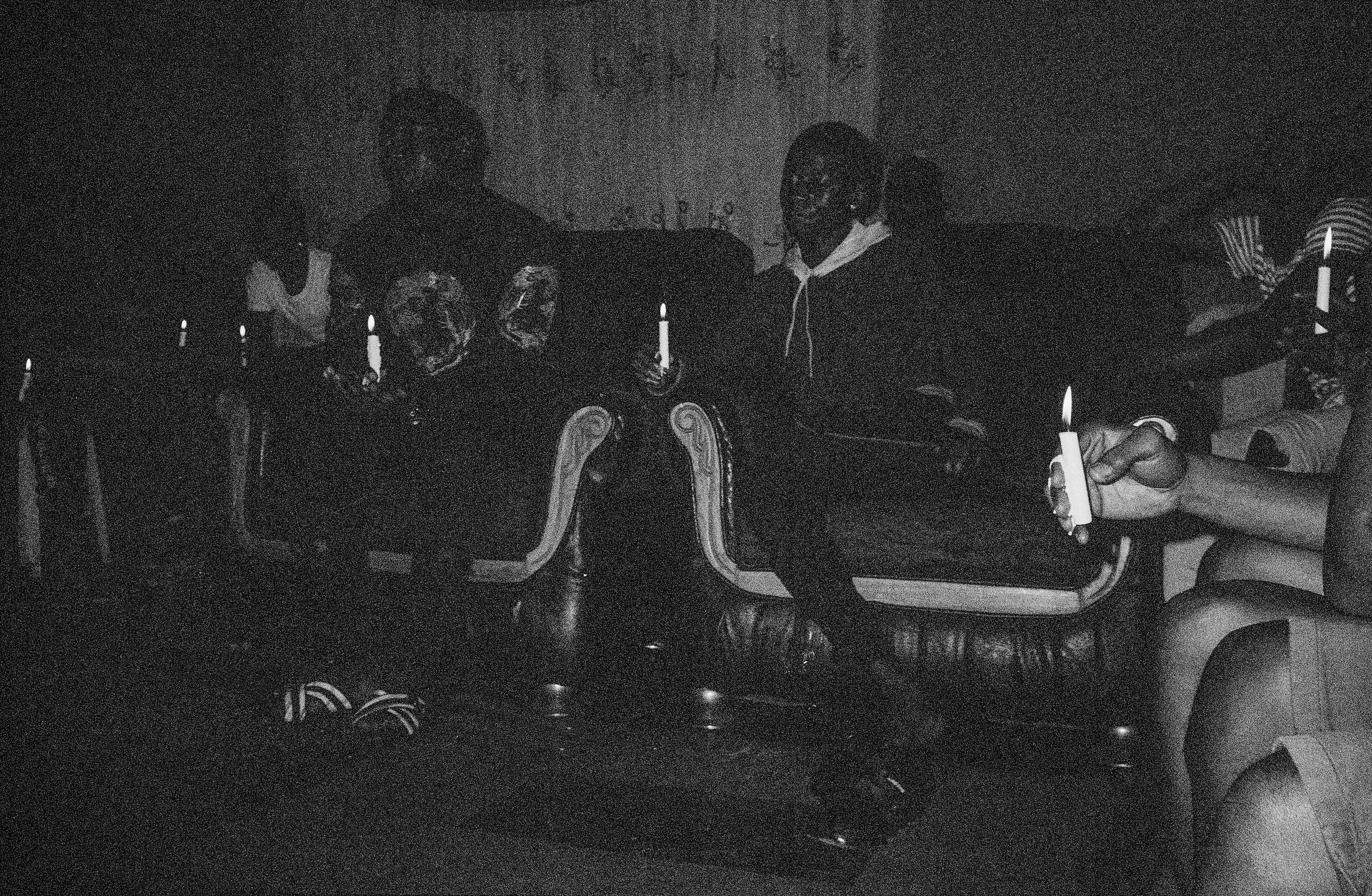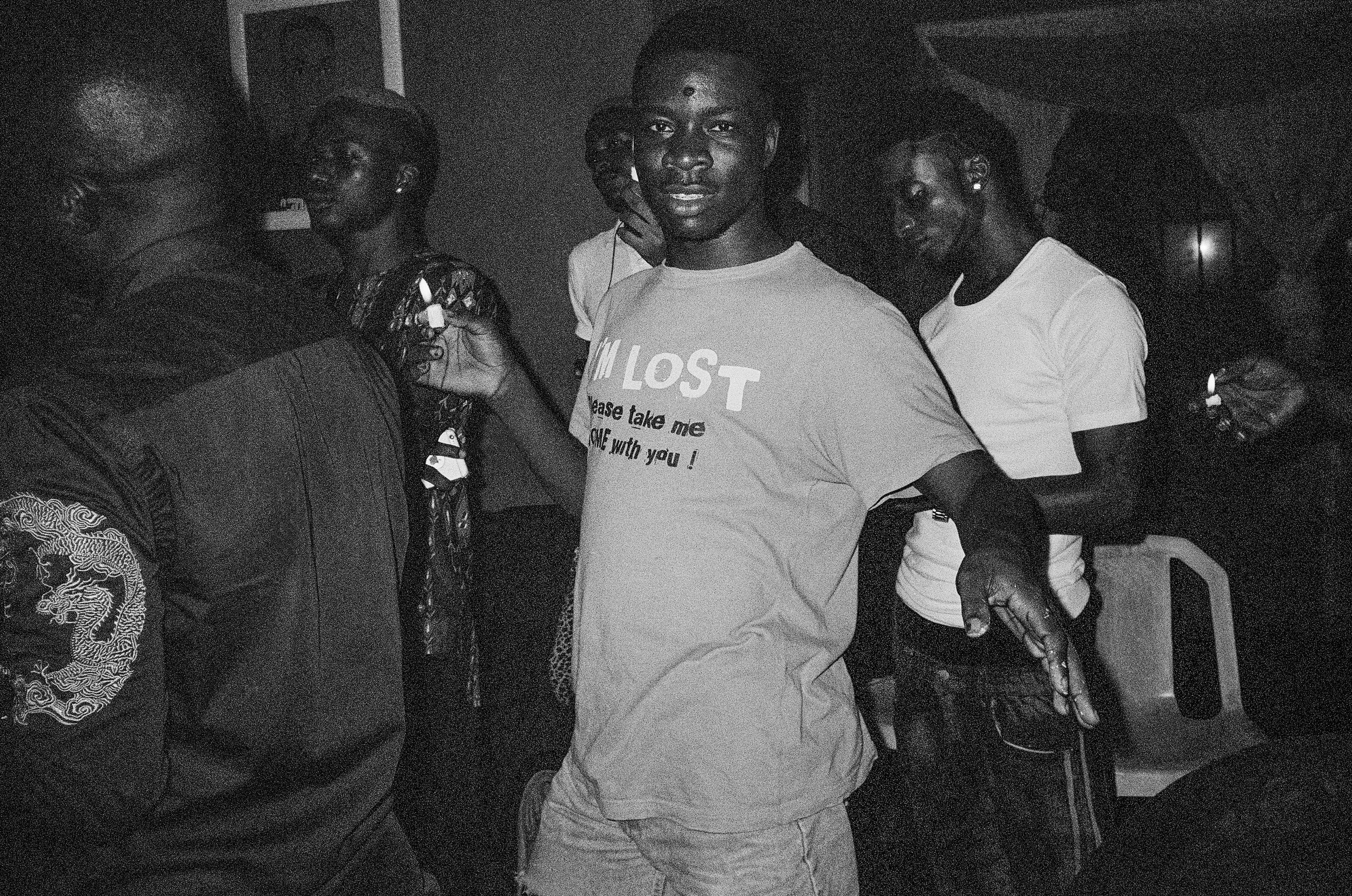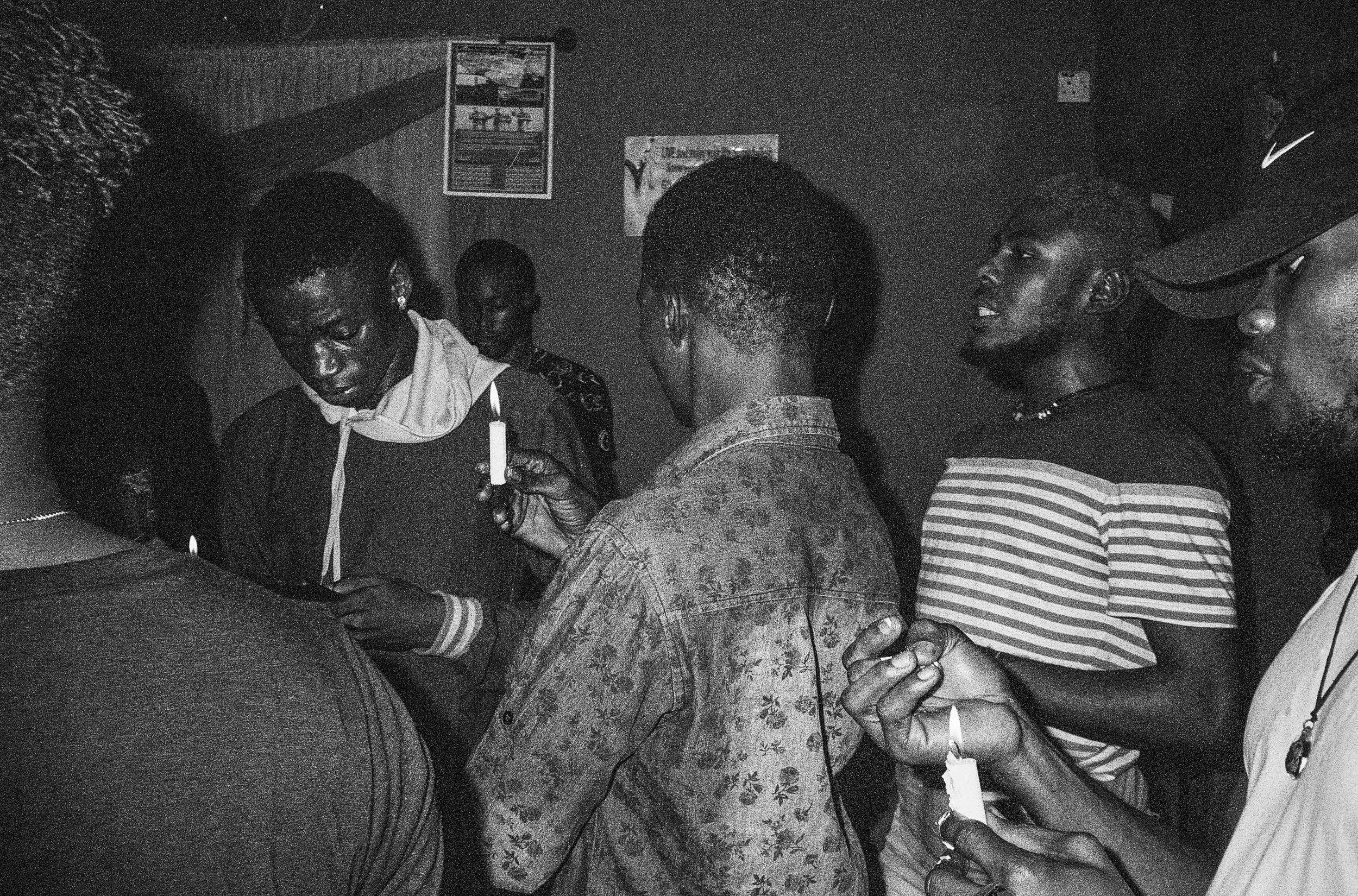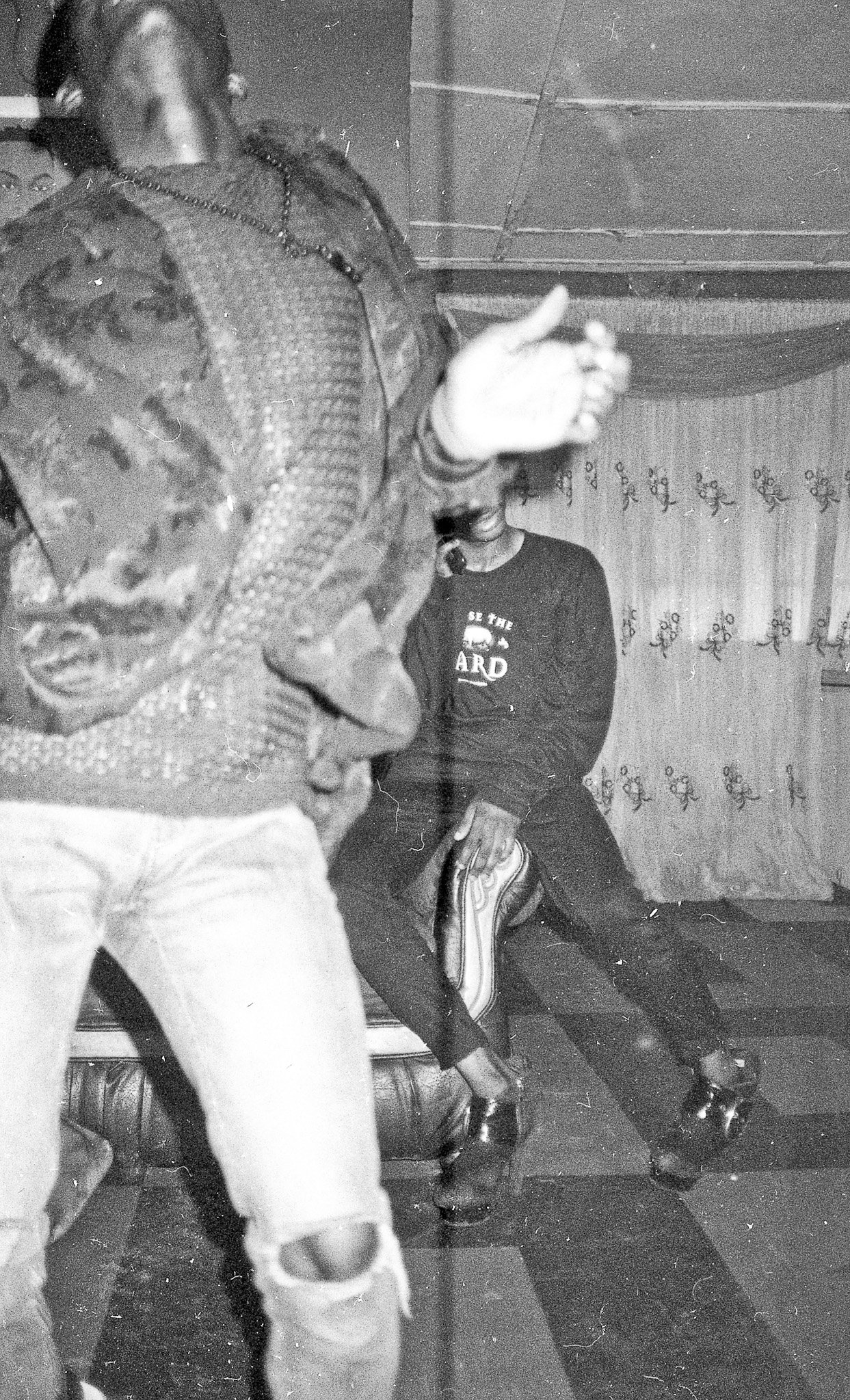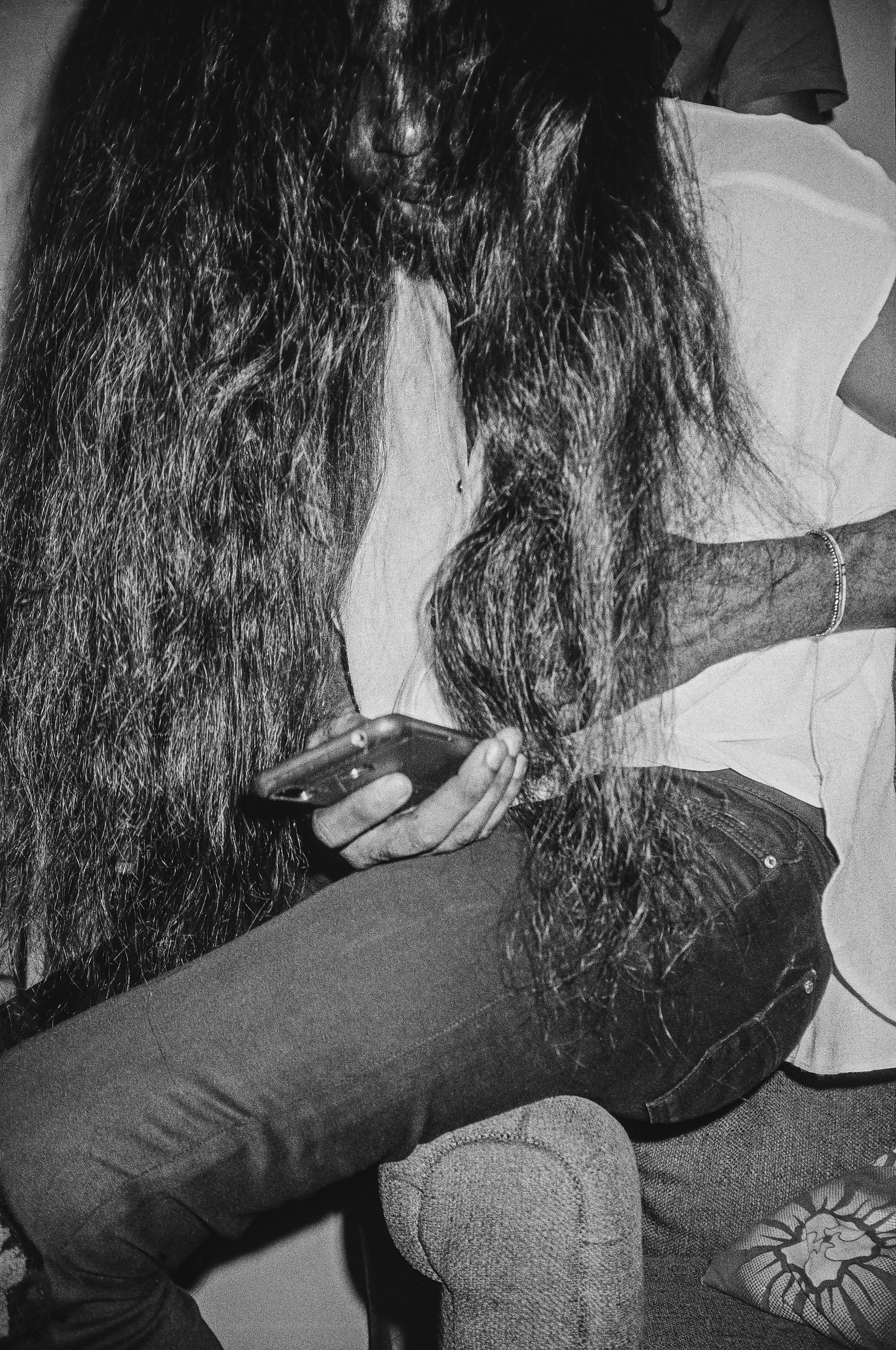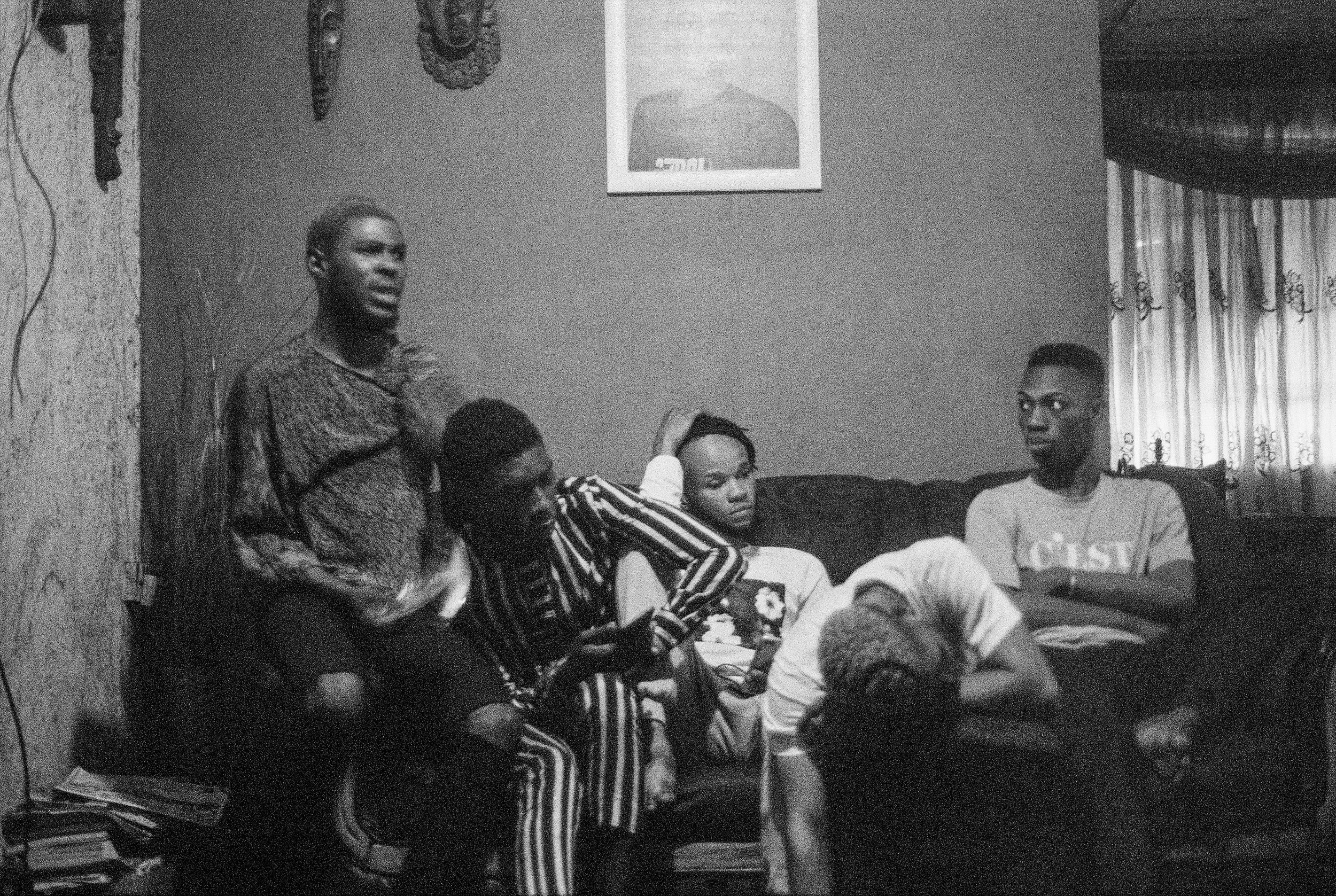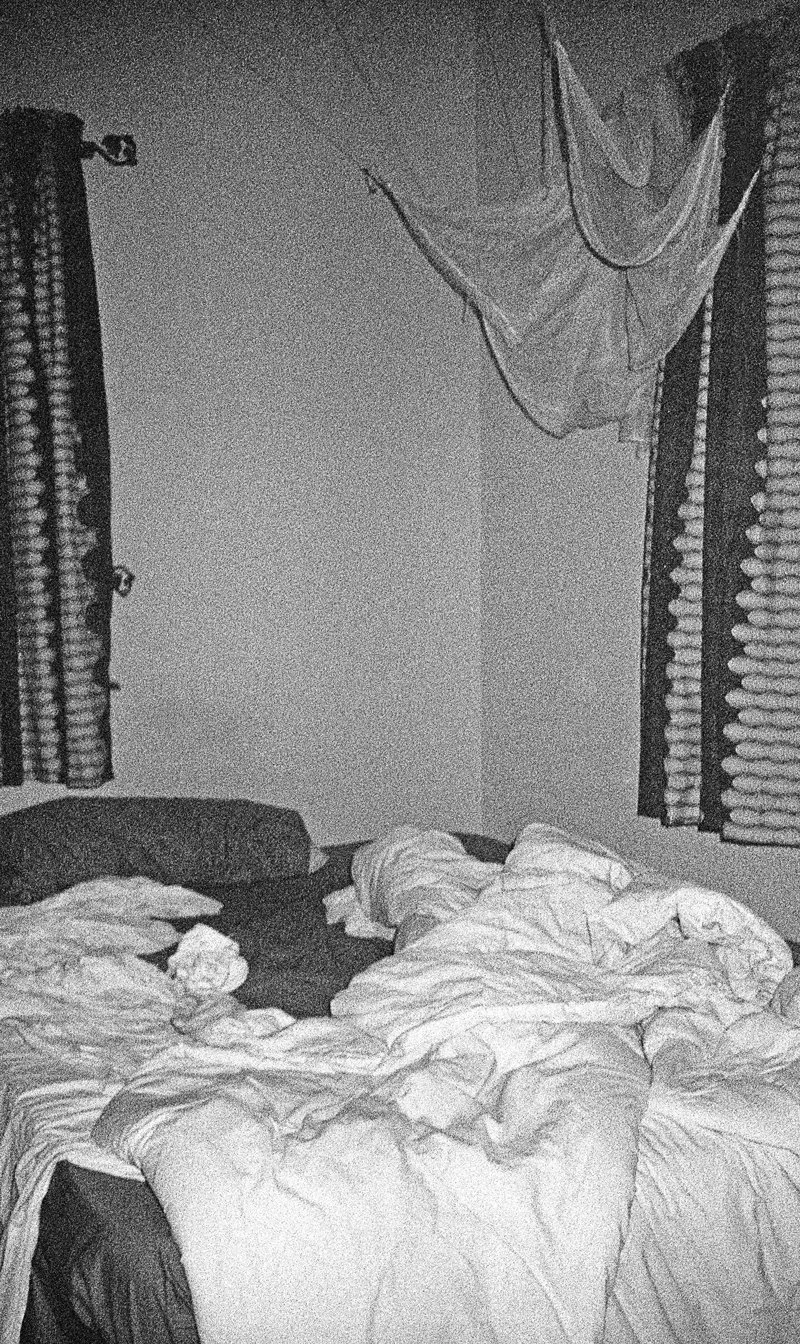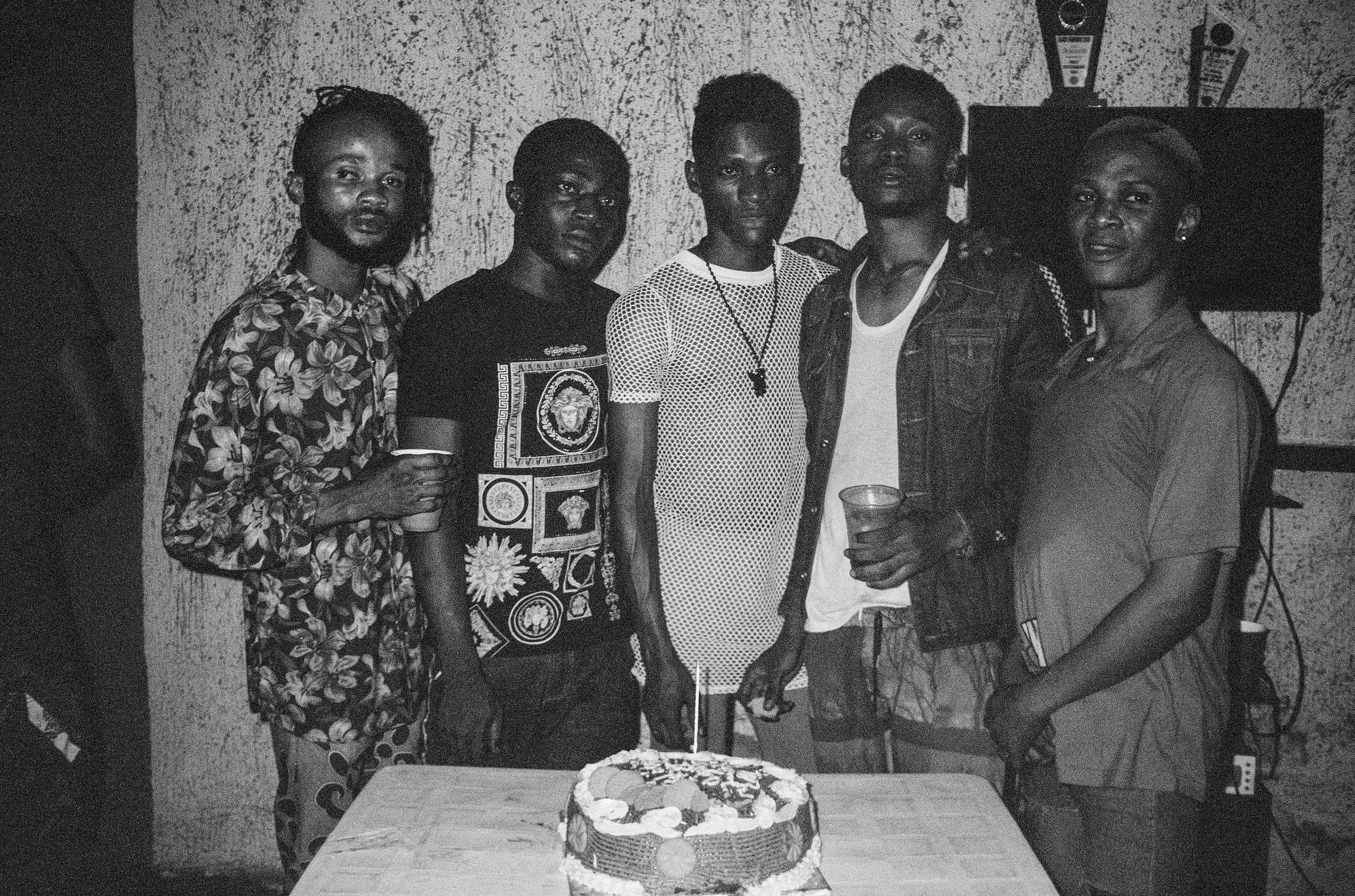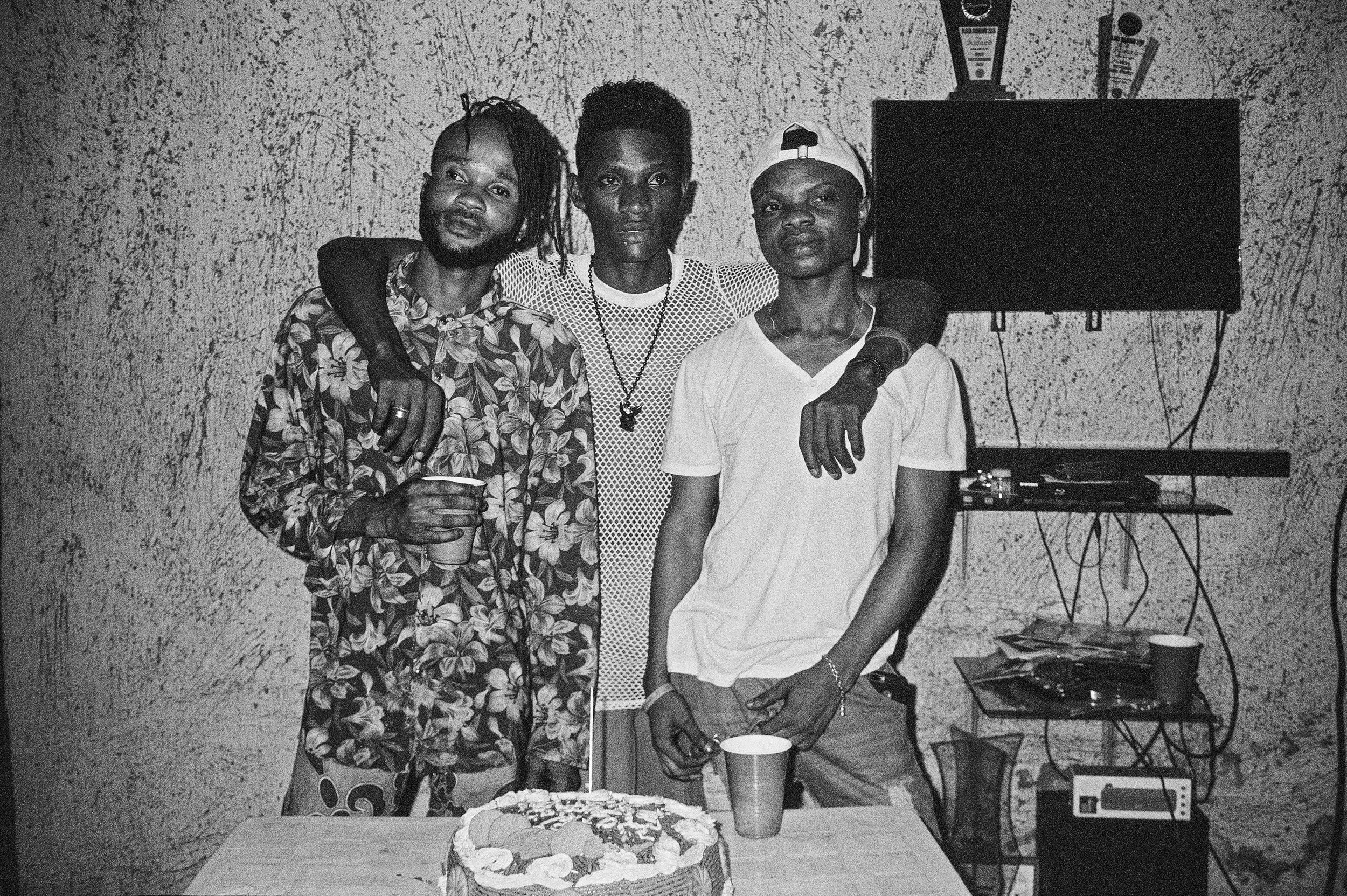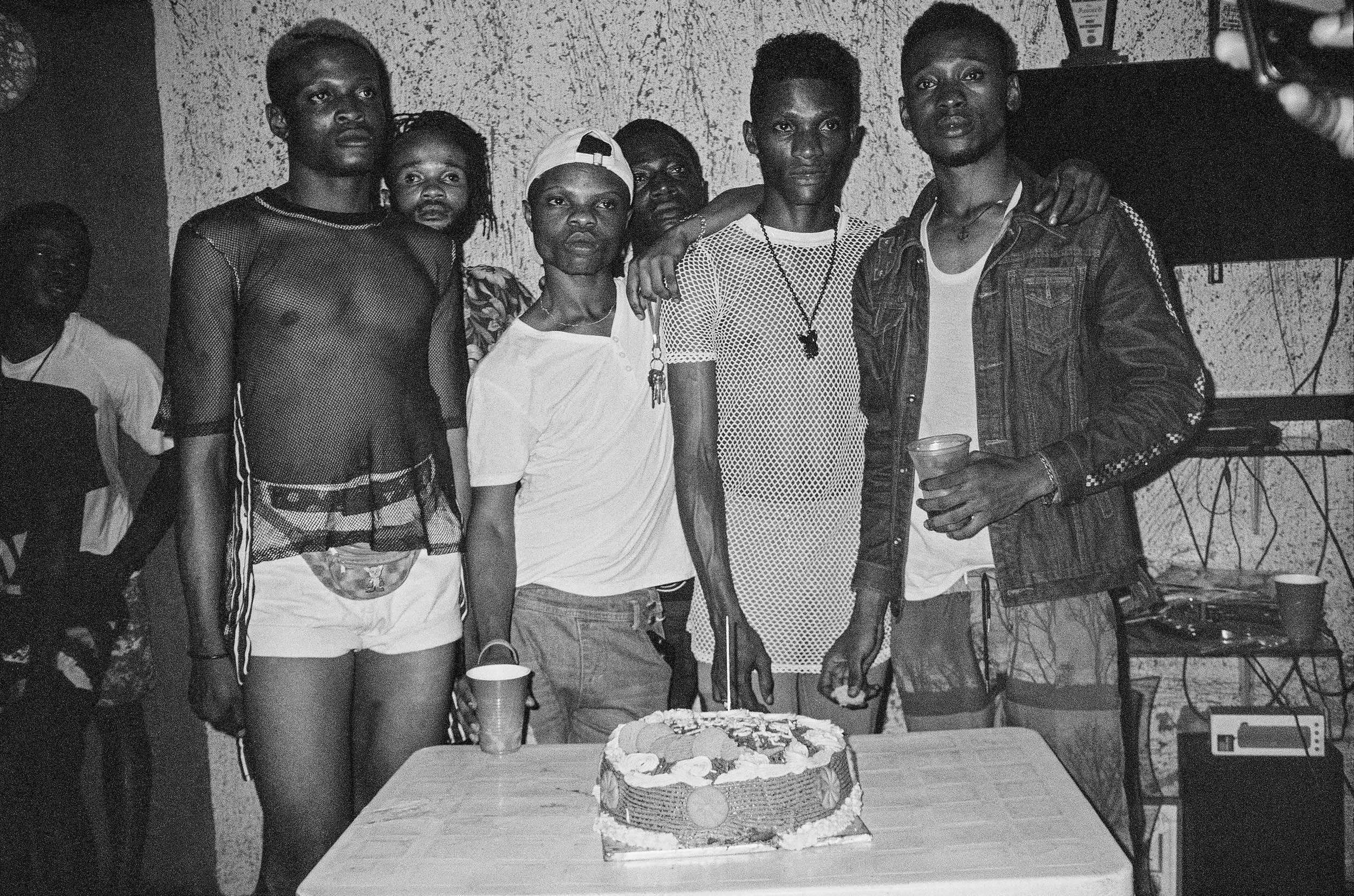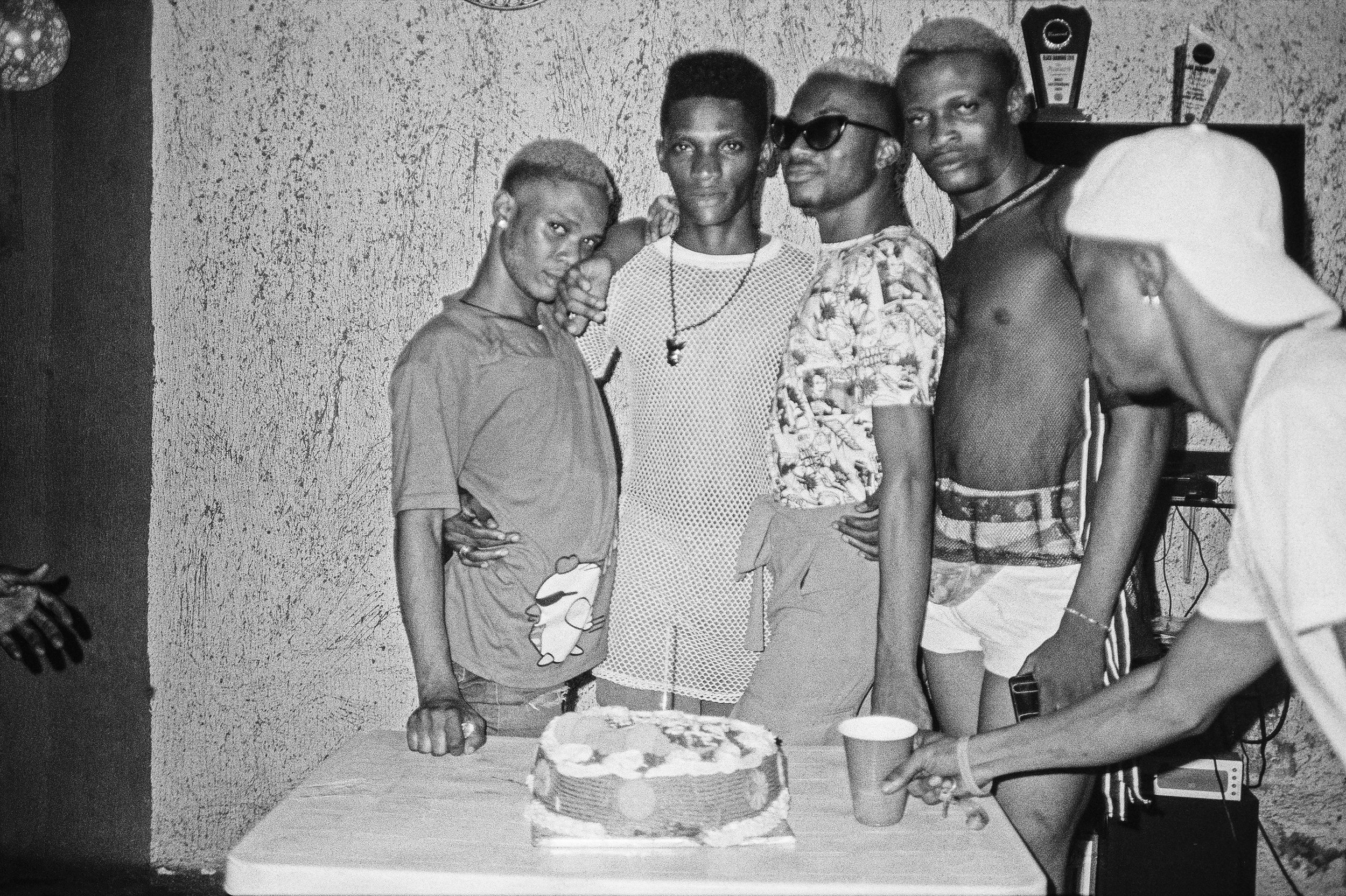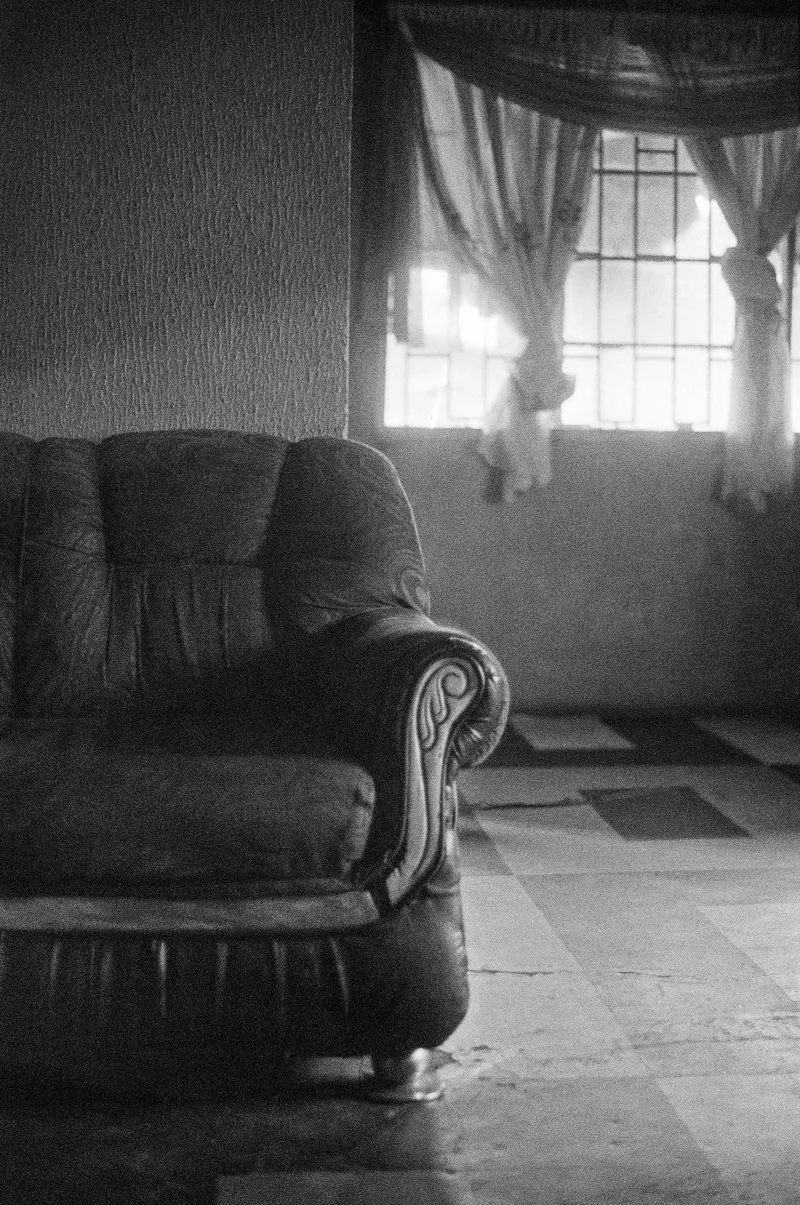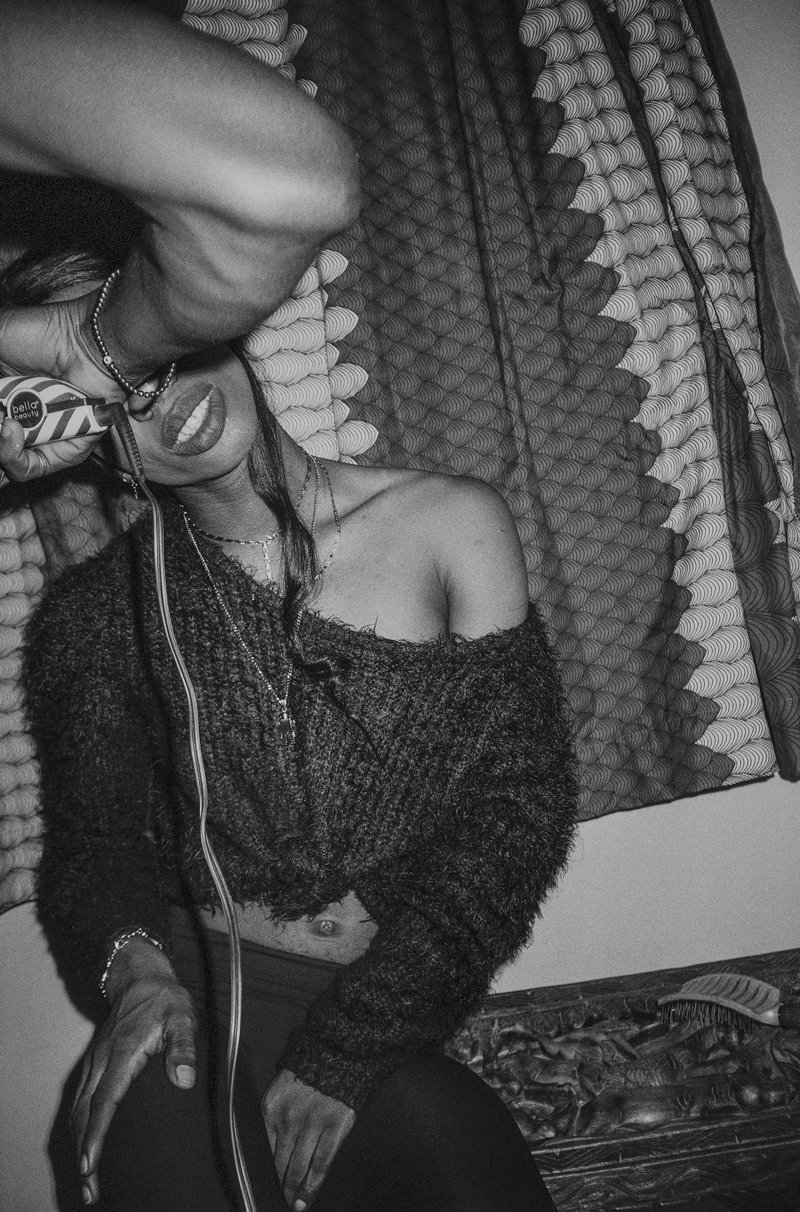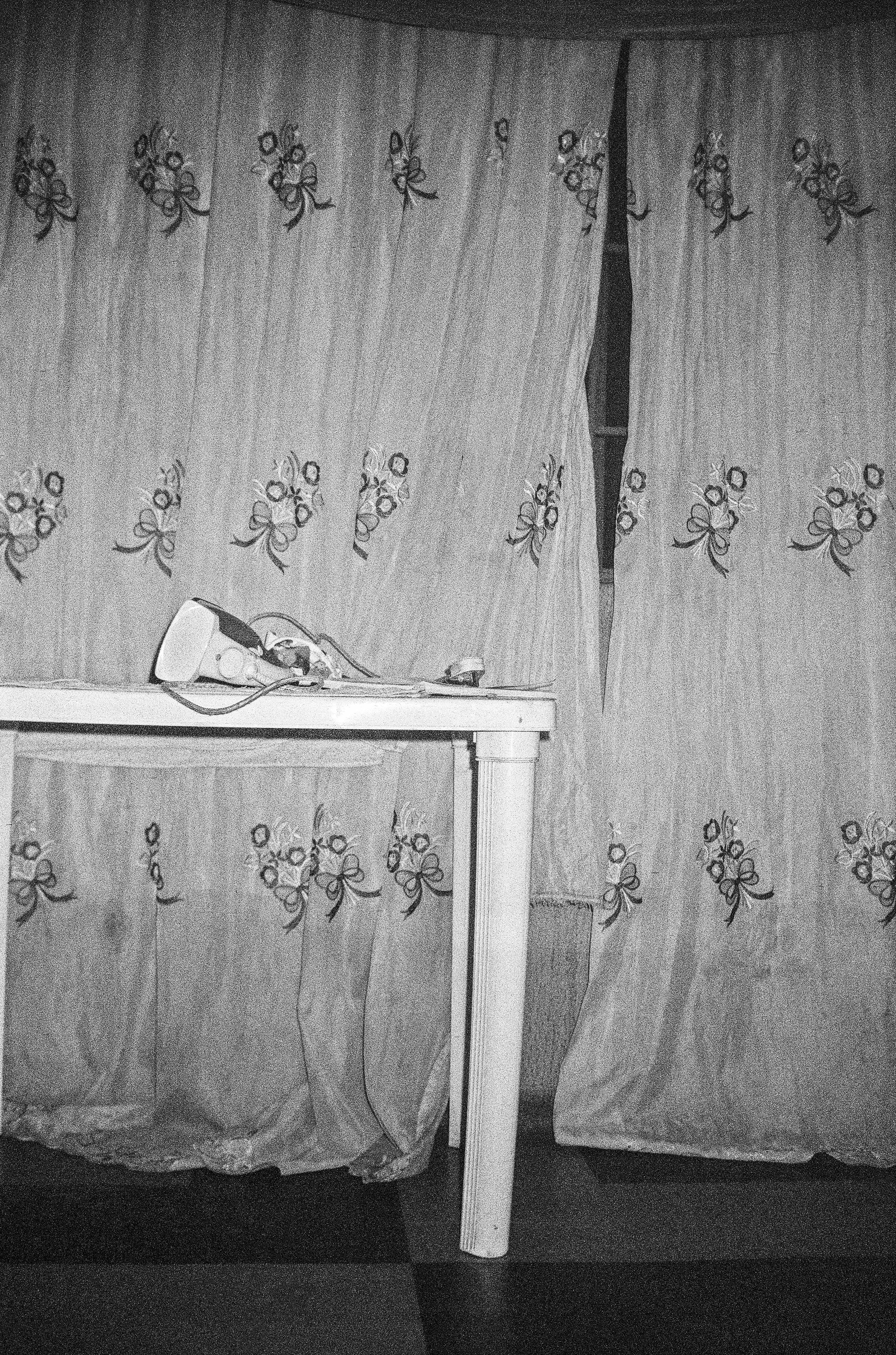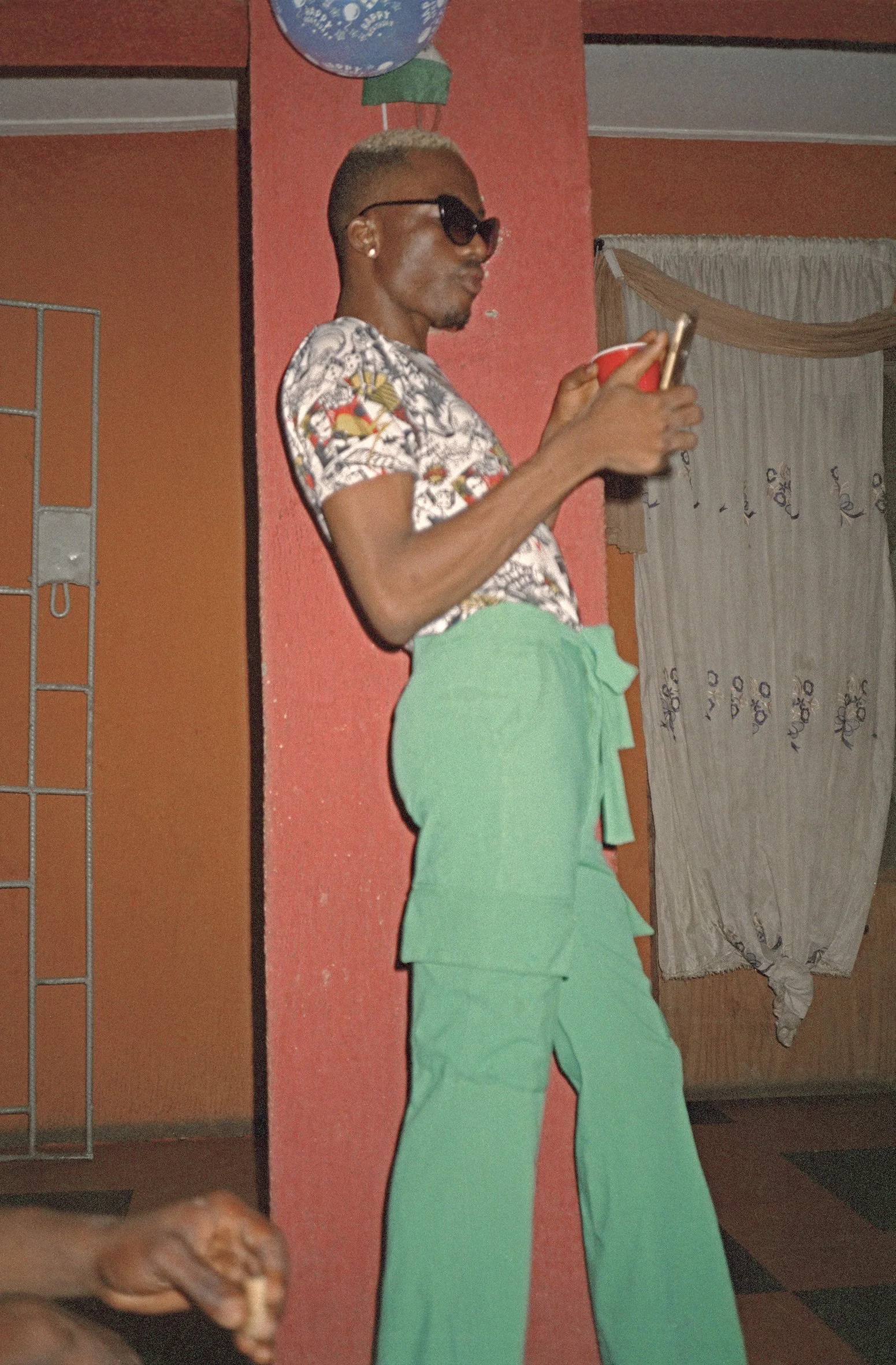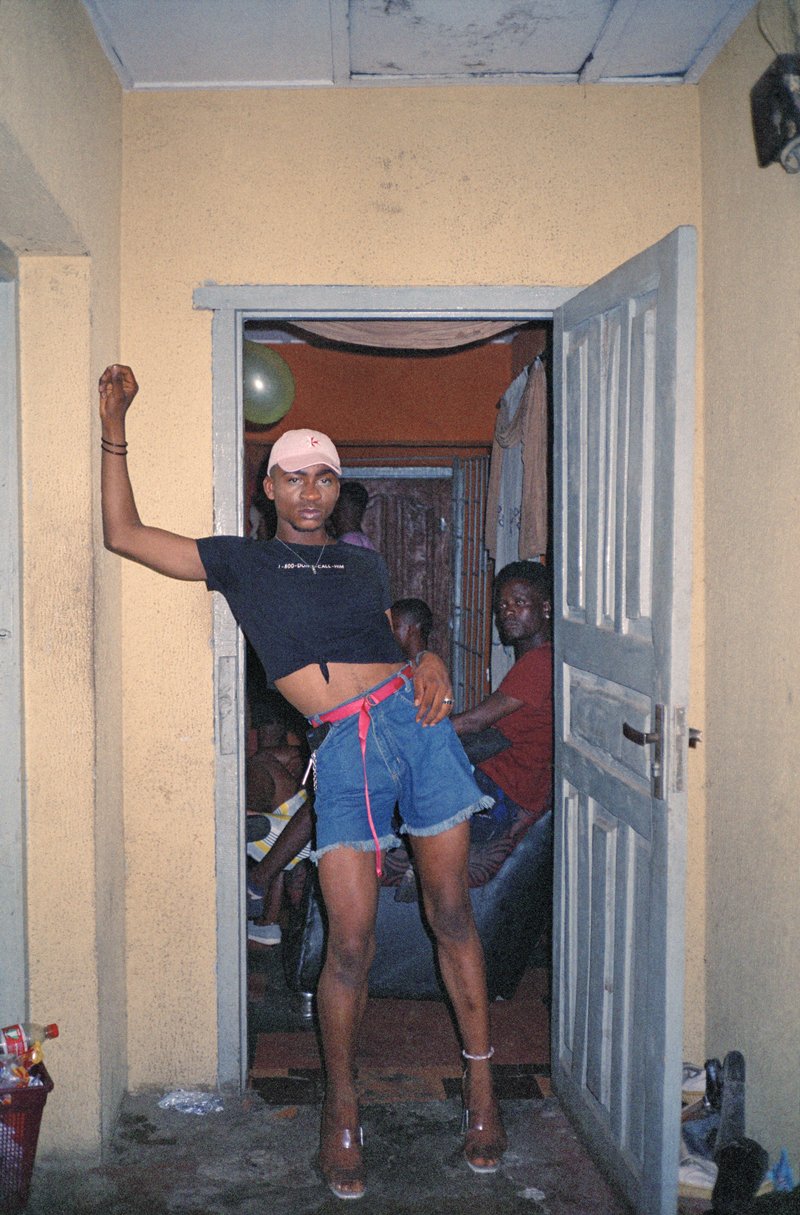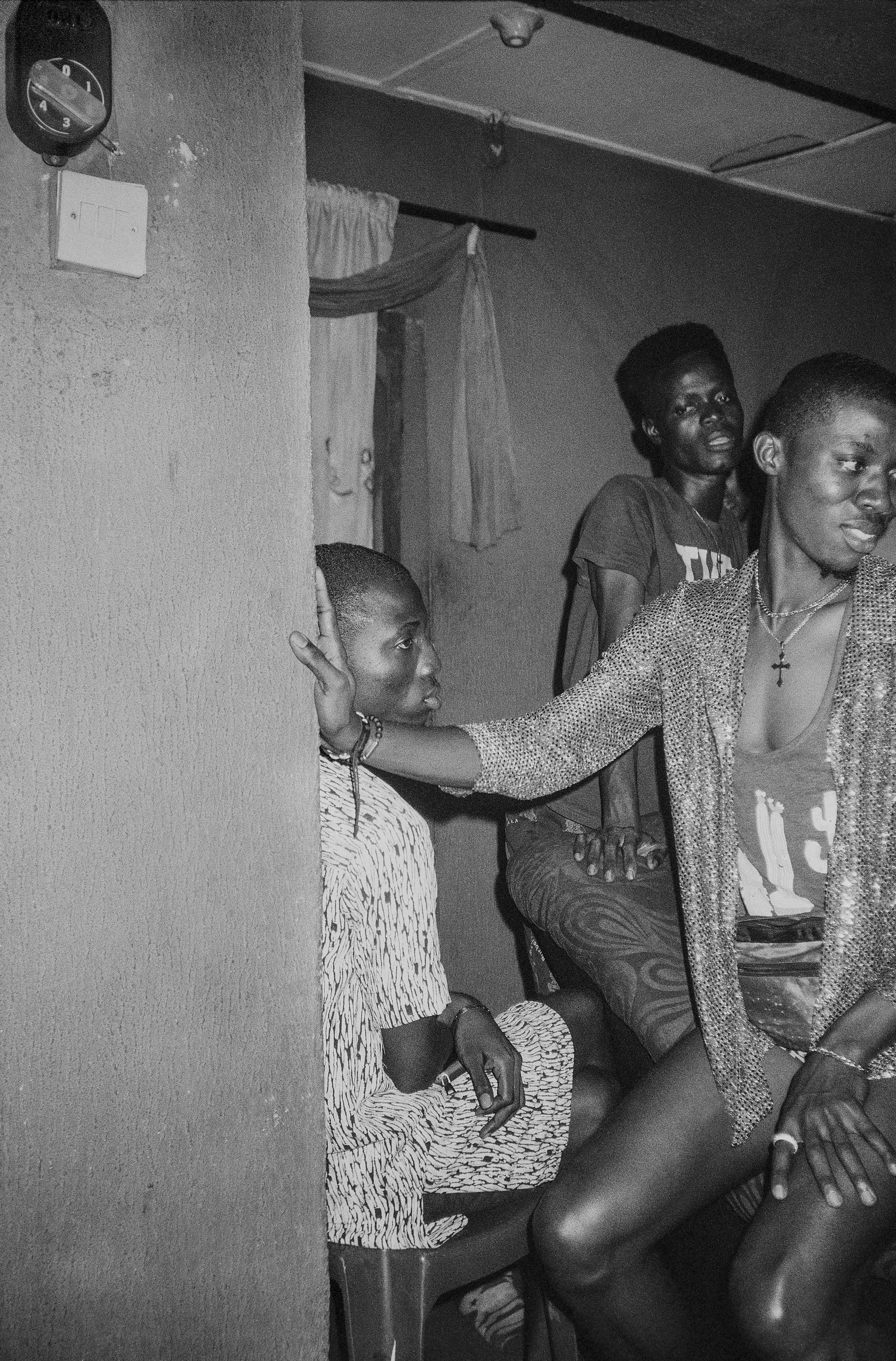SABELO MLANGENI, THE ROYAL HOUSE OF ALLURE
“Like many cities in the world Lagos is a city of extremes. Individuals who fit into the mould of heteronormativity (especially those protected by wealth) are considered worthy of protection and celebration while others (feminised, queer and poor bodies) are rendered invisible and unworthy. Queer and poor people are not only invisible, they are also unsafe due to discrimination, criminalization and violence.
“The Royal House of Allure” is a name of a (safe) House on mainland Lagos where members of the queer community in need of boarding (due to various circumstances) live together. A House is a family unit that one is able to select into; a place of gathering for those who are not allowed to gather anywhere else. Houses are more than just places of survival, they are a physical embodiment of radical queer expression that encourage solidarity. House culture originates from New York’s ballroom culture which emerged in the 1920s and reached an apex in the 1980s — a matriarch, referred to as house mother, provides housing as well as a support system for members of the LGBTQIA+ community (referred to as her children). These establishments actively advocate for inclusivity and provide members of the community with a space to construct a sense of self through artistic practices within beauty, fashion and music.
In 2019, Mlangeni spent six weeks in Lagos photographing the queer community at The Royal House of Allure. His awareness of the House came as a result of interactions with well-known queer figures in Nigeria, through social media. This photographic essay forms part of a larger body of work photographing queer communities on the continent (specifically South Africa and the DRC).
The Royal House of Allure contains simple images that reveal the complexities behind representation. The images diverge at a single specific point; those that display fantasy through glamour where subjects actively pose for the camera and those that offer quieter banal moments where subjects are simply going on about their day at the house: braiding each other’s hair, having conversations, sewing clothes, napping, cooking, laughing and taking selfies. They offer us a glimpse of the love and acceptance between community members within the social structure of a House.
John Berger saw glamour as a modern invention linked to ideas of grace, elegance and authority but of course, glamour is also inextricably linked with visibility, notions of beauty and power —those who see themselves (and are seen) feel powerful while others are rendered unseeable and therefore unworthy. Although it seems so obvious that it might require no comment, representation matters and images have the potential to influence systems of thought, views and opinions. The idea that images have the potential to influence systems of thought goes a long way in explaining Mlangeni’s commitment towards documenting various communities in his practice. The Royal House of Allure forms part of his broader practise of (re)imaging and (re)imagining vulnerable bodies as safe, seen and worthy of protection and celebration.”
Text by Nkgopoleng Moloi
